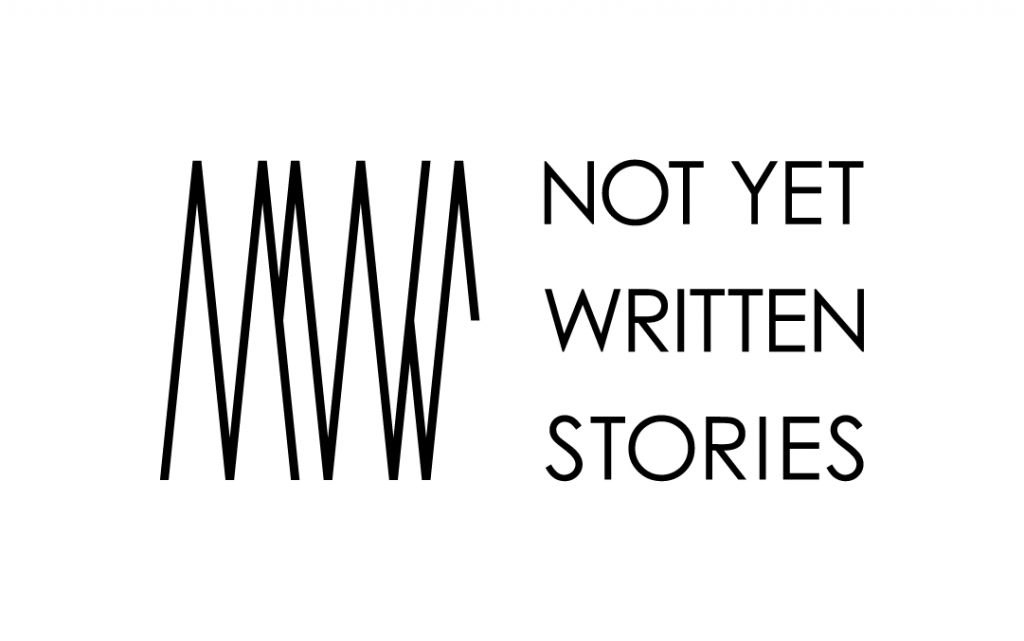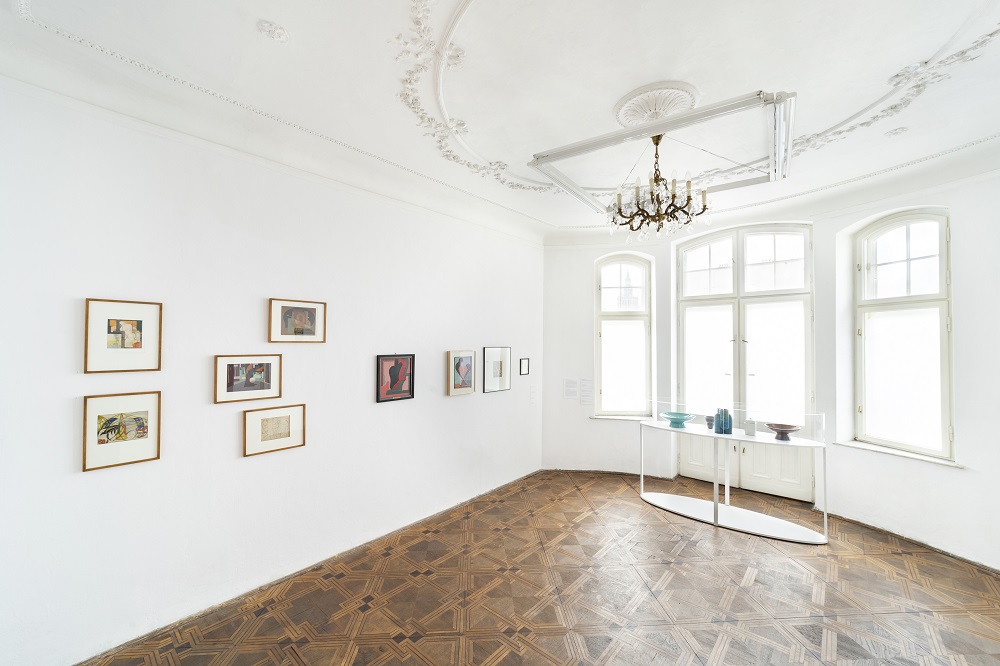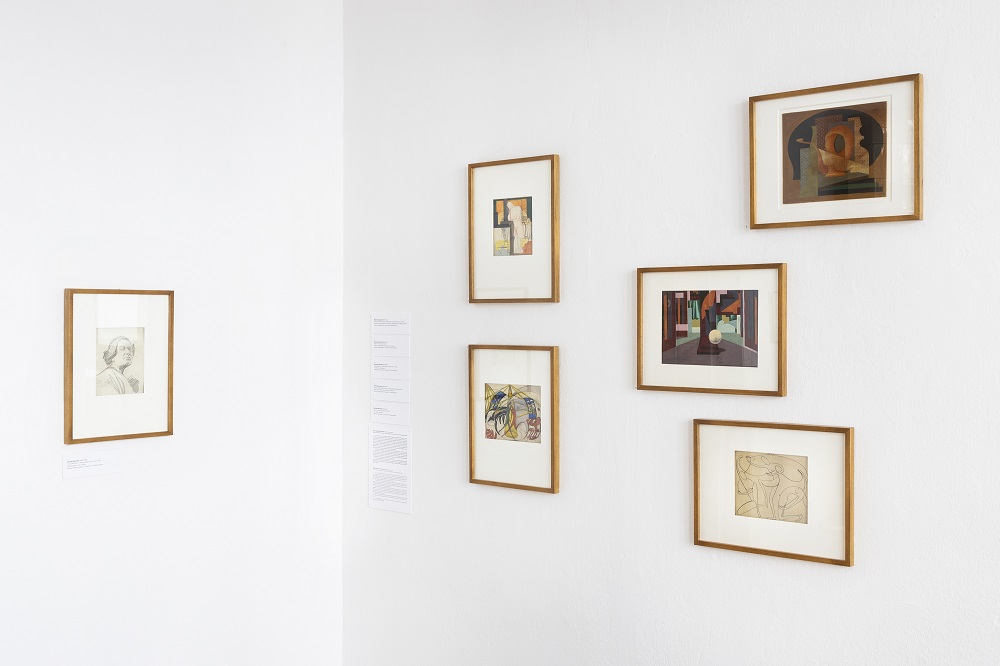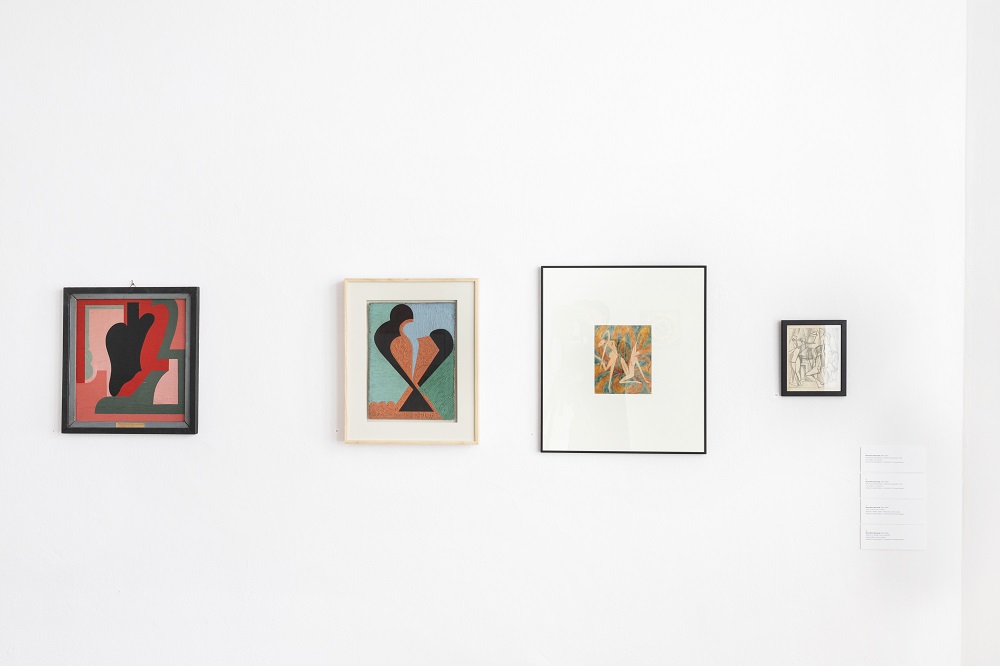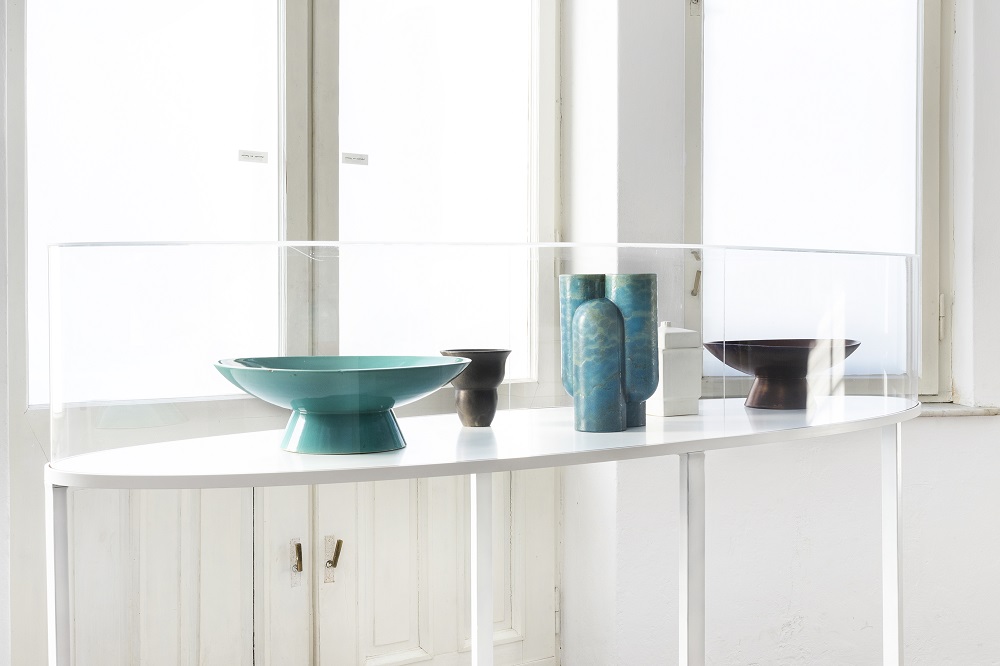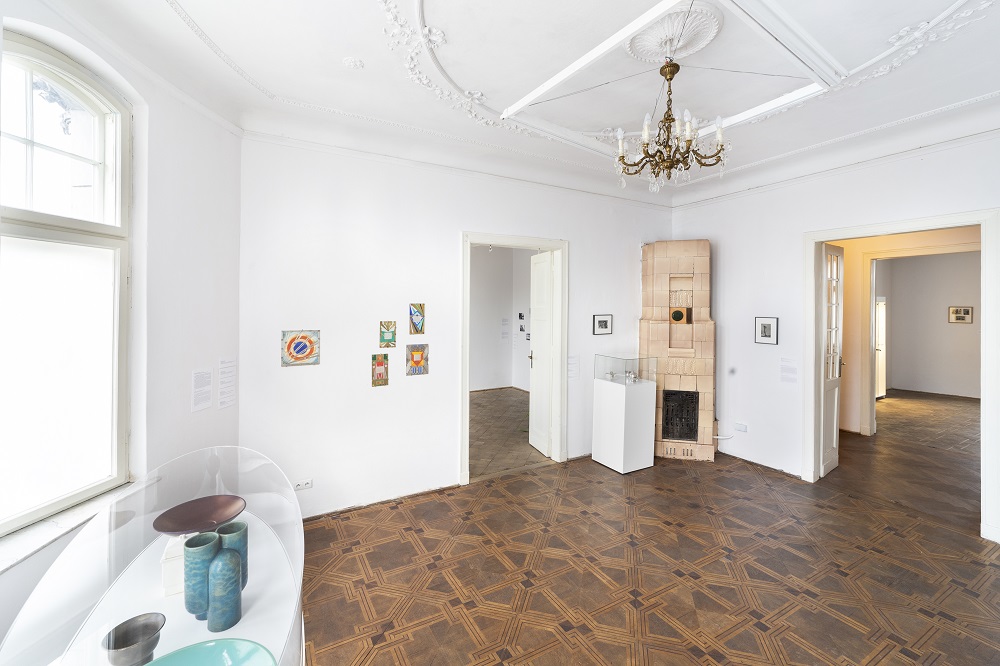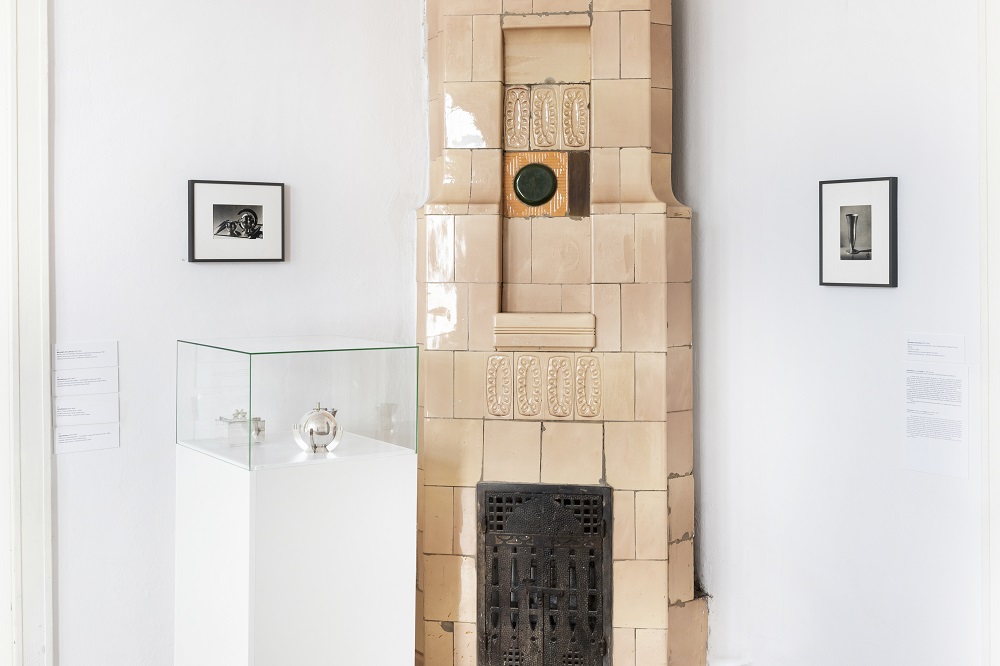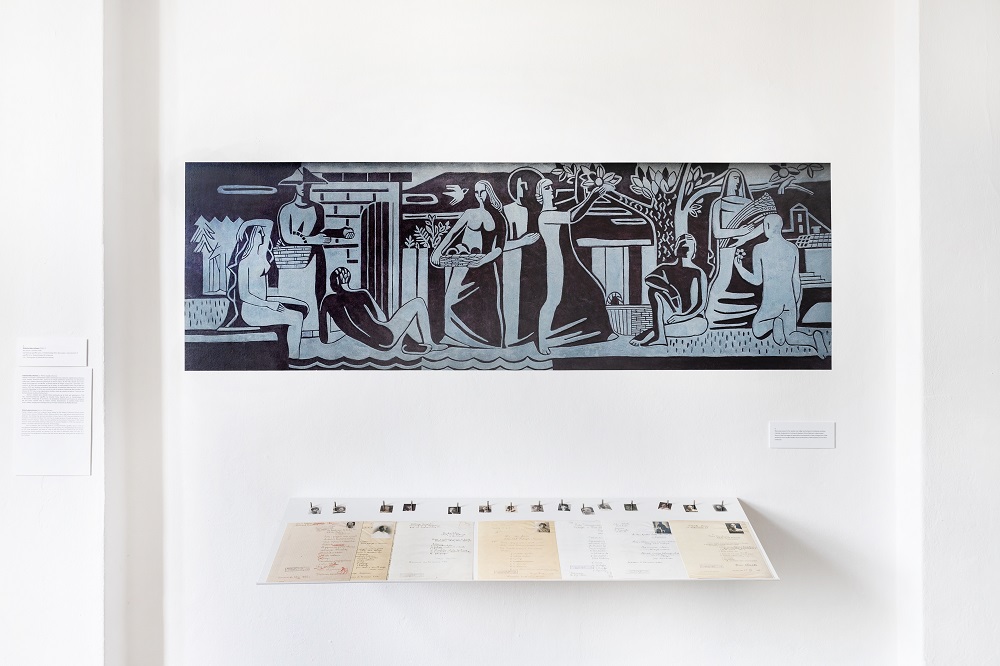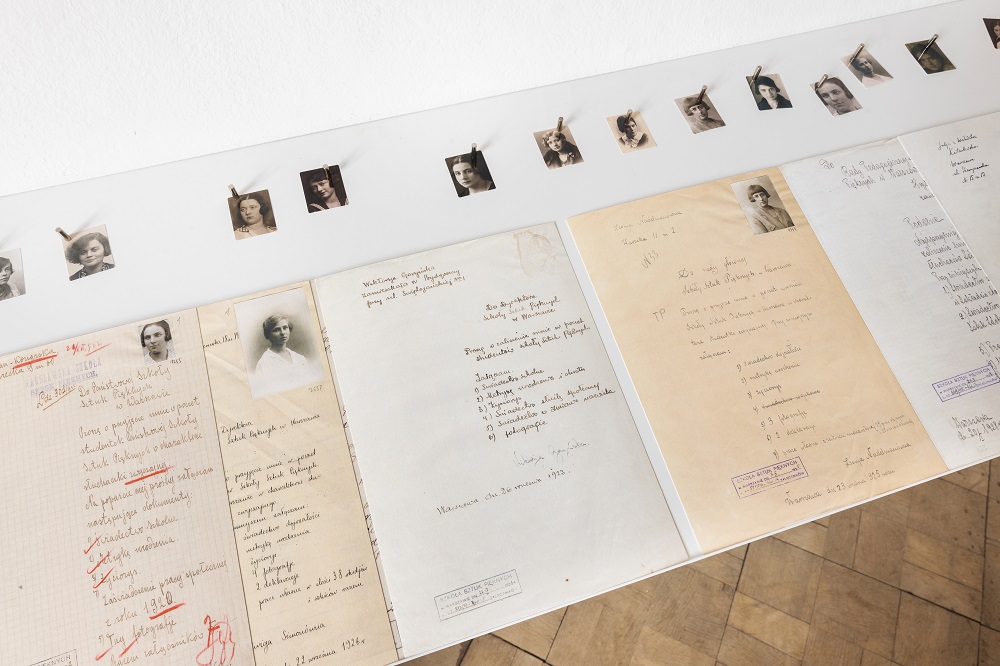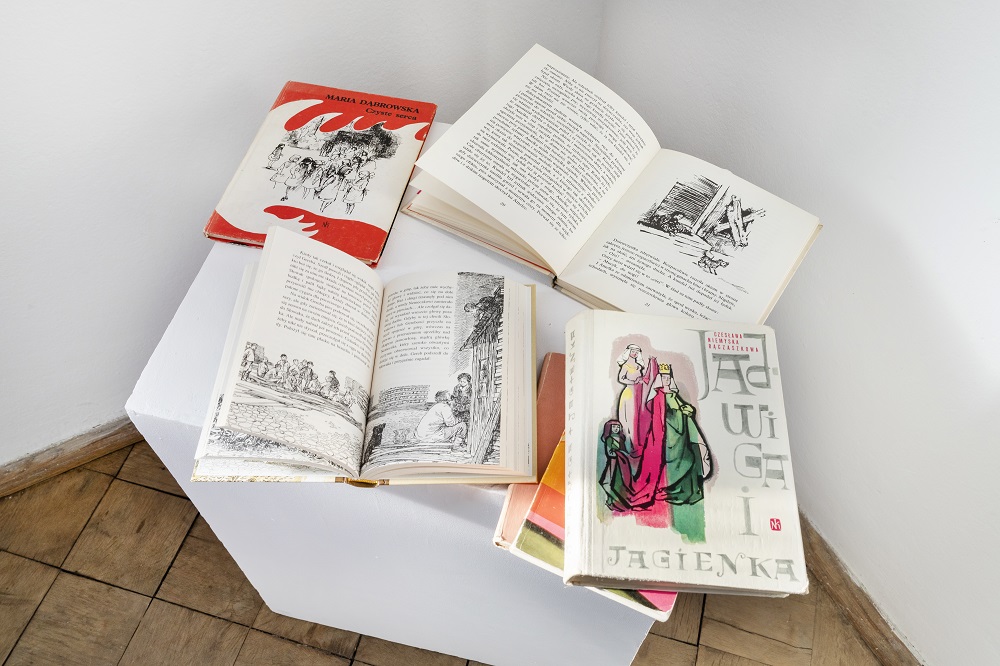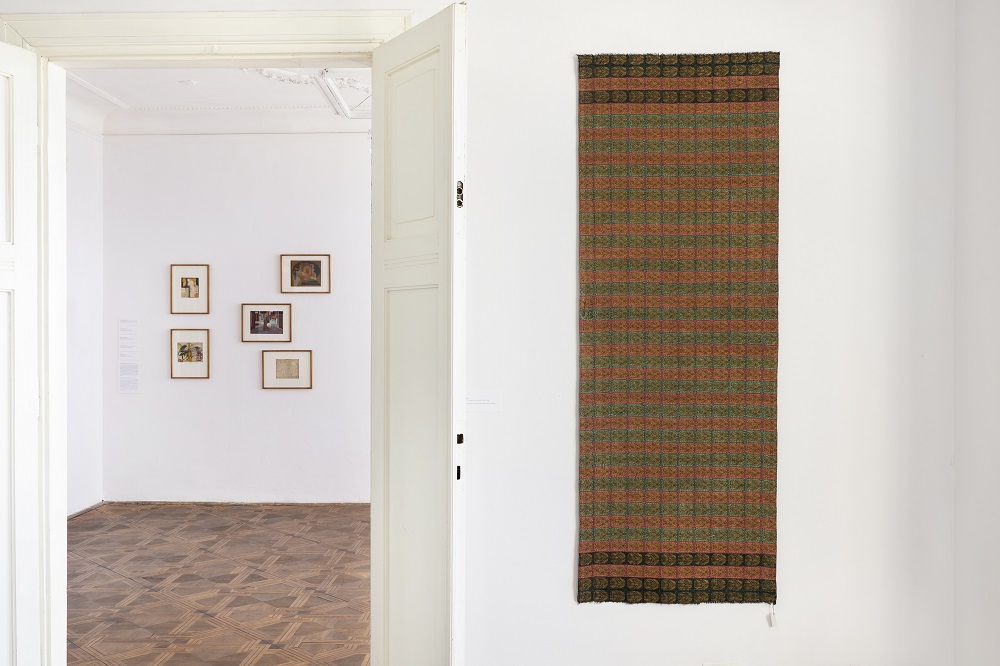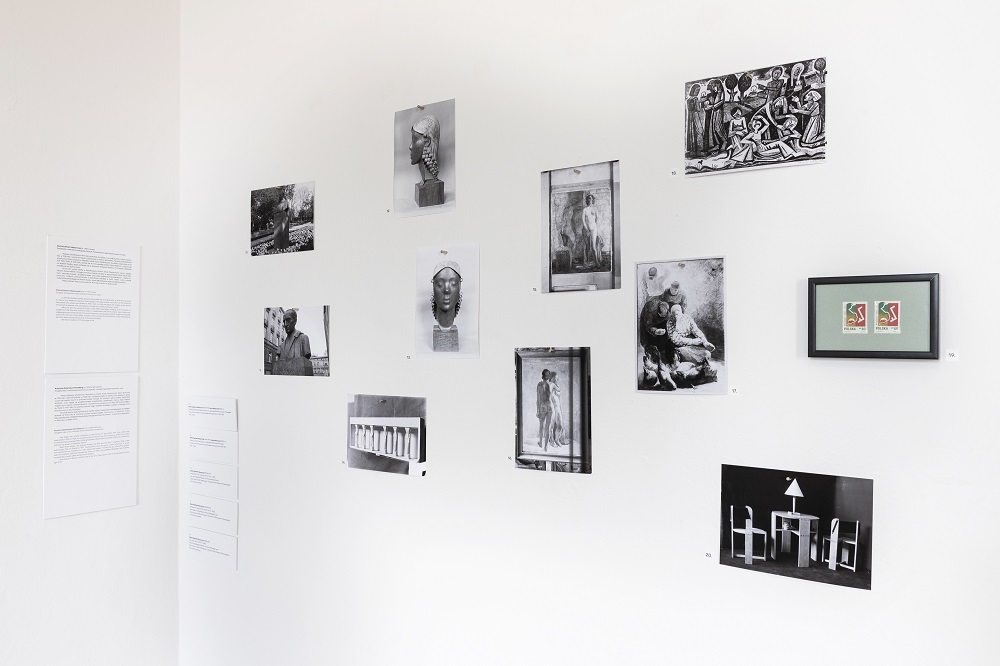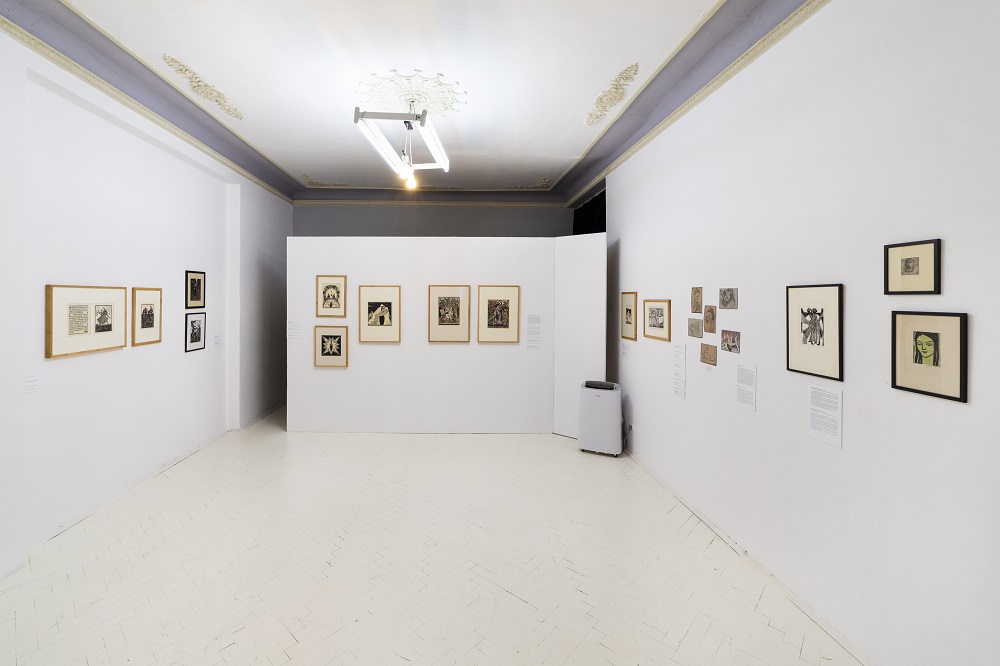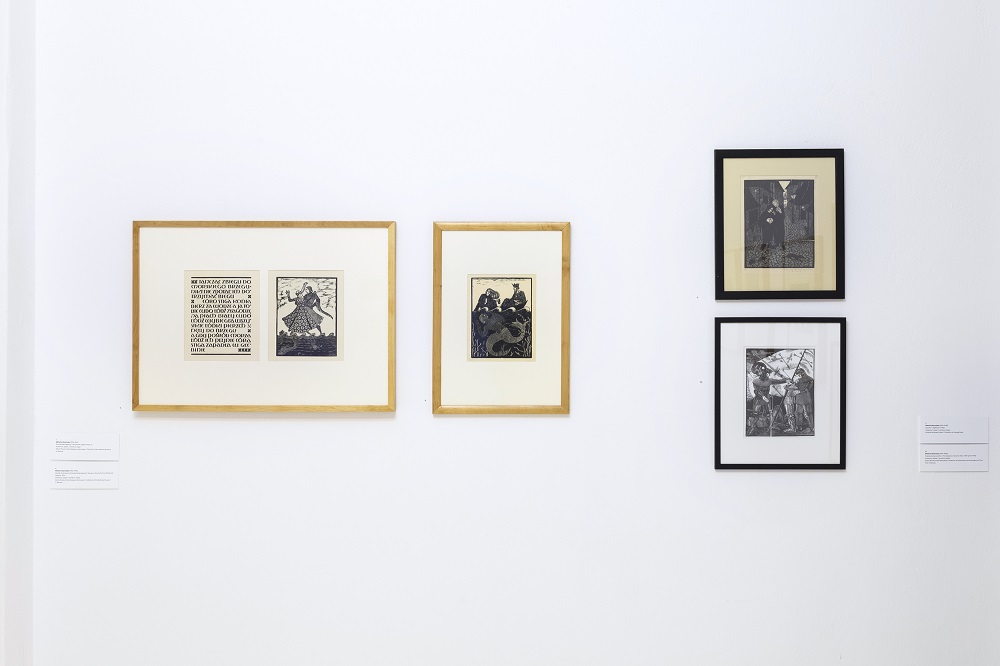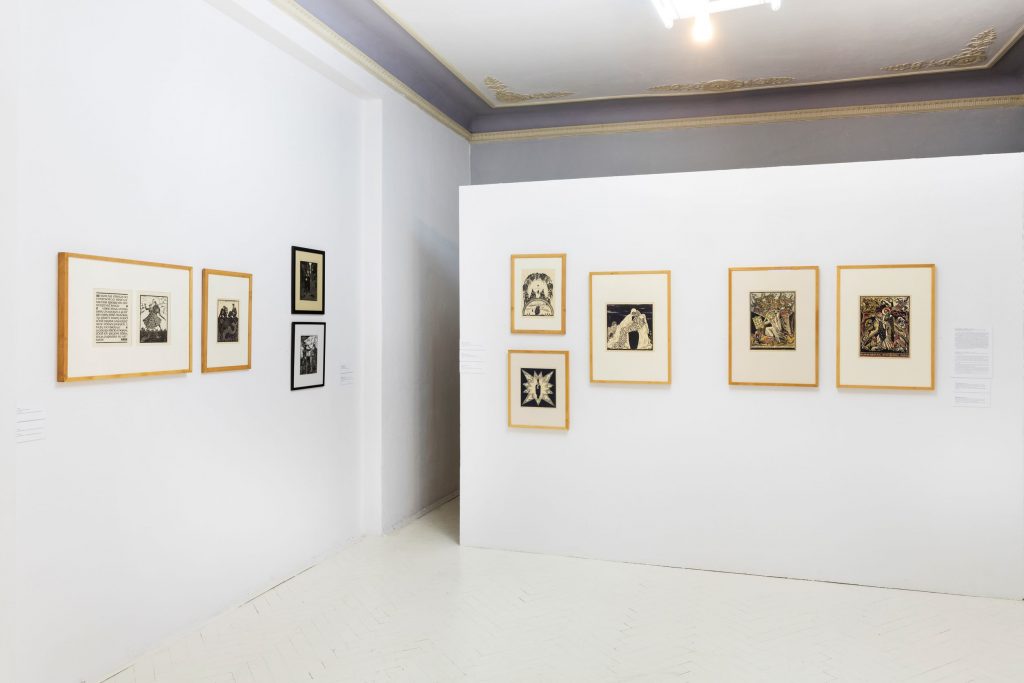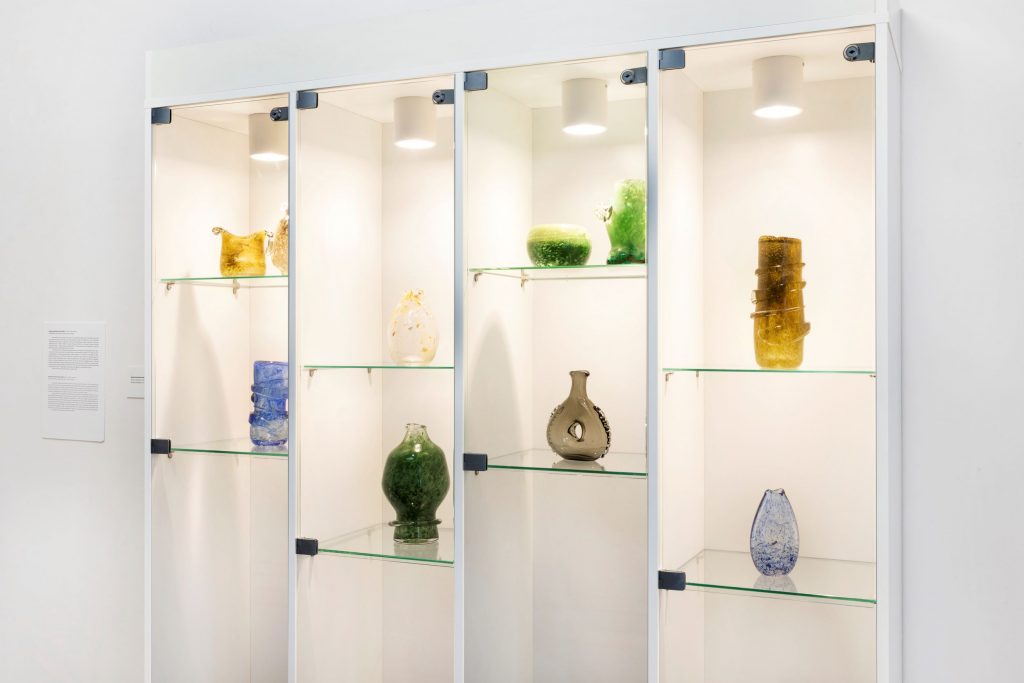The publication Not Yet Written Stories. Women Artists in Central and Eastern Europe is available already!
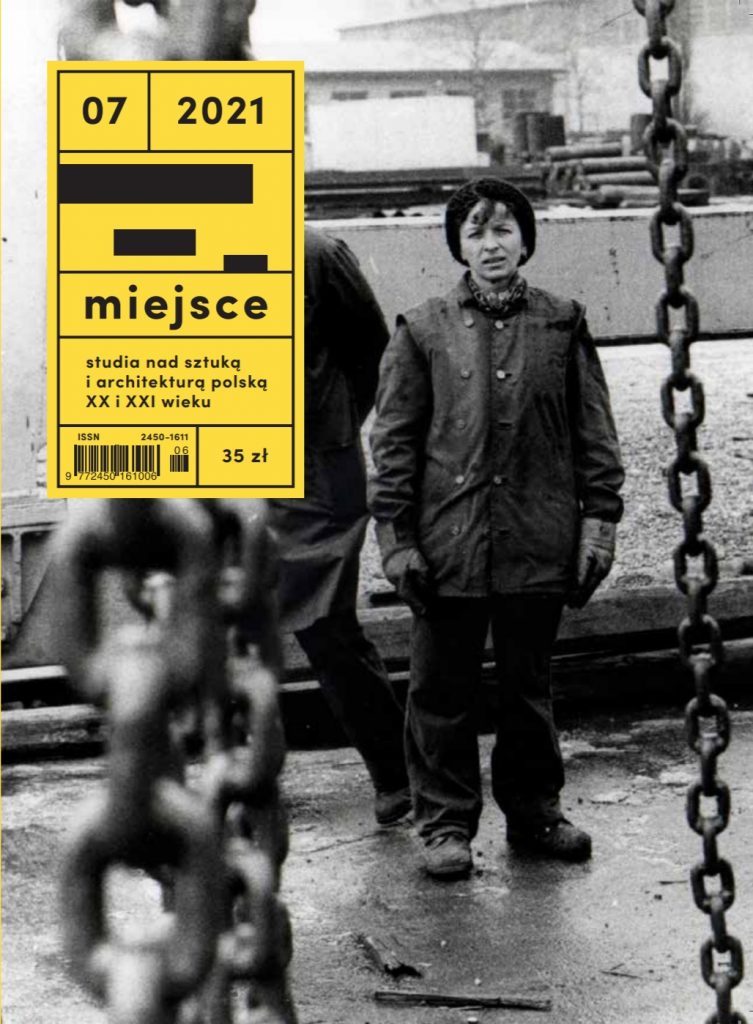
The articles published in this issue of the journal “Miejsce. Studies on Polish Art and Architecture in the 20th and 21st Century” were presented by the speakers at the conference “Not Yet Written Stories. Women Artists in Central and Eastern Europe,” which took place on 2-3 of September 2021 and was organized by the Arton Foundation in cooperation with the LCCA-Latvian Centre for Contemporary Arts Riga, SCCA-Lublijana and Office for Photography, as a part of the project “Not Yet Written Stories. Women Artists’ Archives On-Line”, realized within the framework of the Creative
Europe program. The articles are available online:

Urška Savič Reflections on the Archive as a Strategy for Re-writing http://miejsce.asp.waw.pl/reflections-on-the-archive-as-a-strategy-for-re-writing-histories/
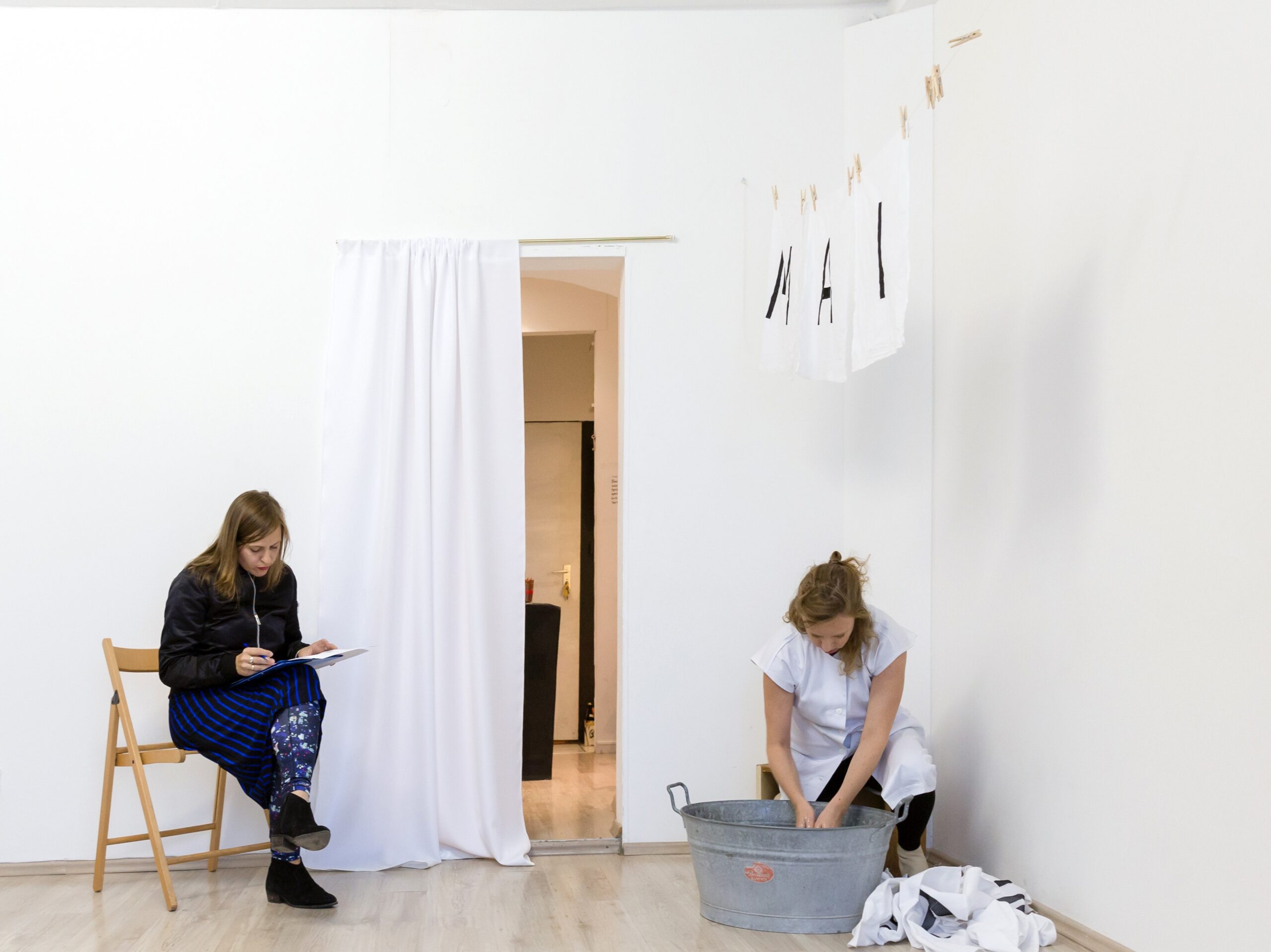
Karolina Majewska-Güde Telling Stories about Feminist Art in Socialist Europe. Or the Archive as a Place of Cross-Generational Remaking http://miejsce.asp.waw.pl/telling-stories-about-feminist-art-in-socialist-europe-or-the-archive-as-a-place-of-cross-generational-remaking/
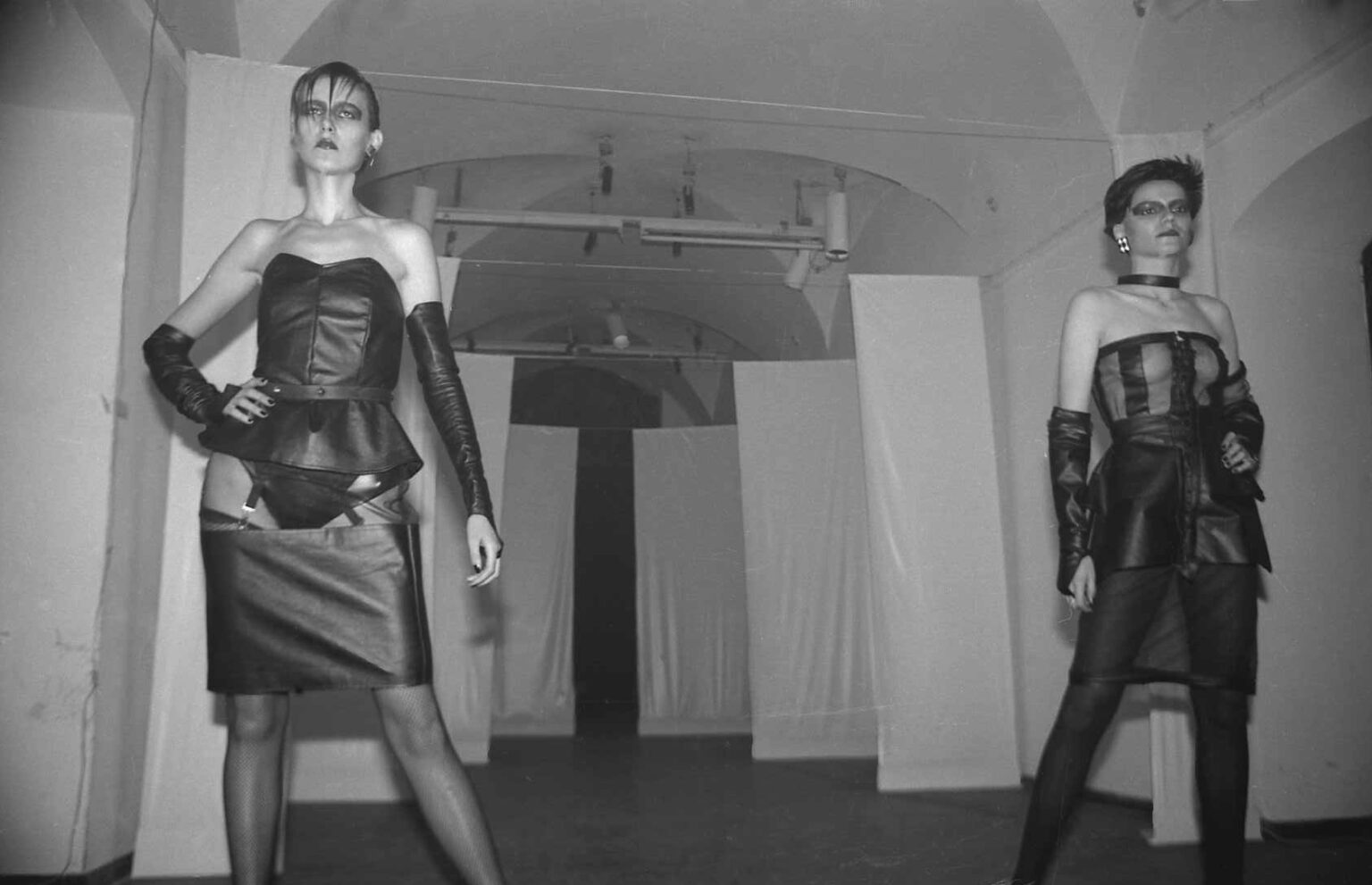
Tia Čiček Women Curators: Examining Women’s Roles at the ŠKUC Gallery in the 1980s http://miejsce.asp.waw.pl/women-curators-examining-womens-roles-at-the-skuc-gallery-in-the-1980s/

Kateřina Štroblová There Is Nothing Like Women’s Art. Work, Positions and Emancipation of Female Artists in Czechoslovakia during the Normalisation Period http://miejsce.asp.waw.pl/there-is-nothing-like-womens-art-work-positions-and-emancipation-of-female-artists-in-czechoslovakia-during-the-normalisation-period/
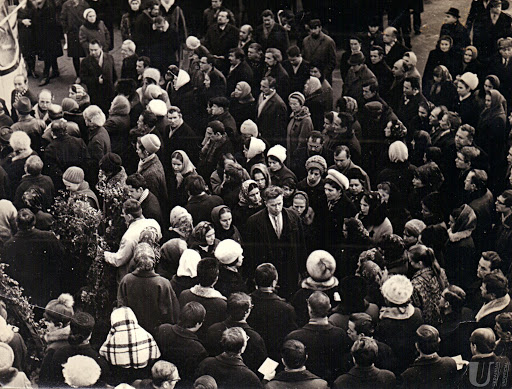
Kateryna Iakovlenko Art between Manliness and Activism. The Role of Ukrainian Women Artists during Political Transformations http://miejsce.asp.waw.pl/art-between-manliness-and-activism-the-role-of-ukrainian-women-artists-during-political-transformations/
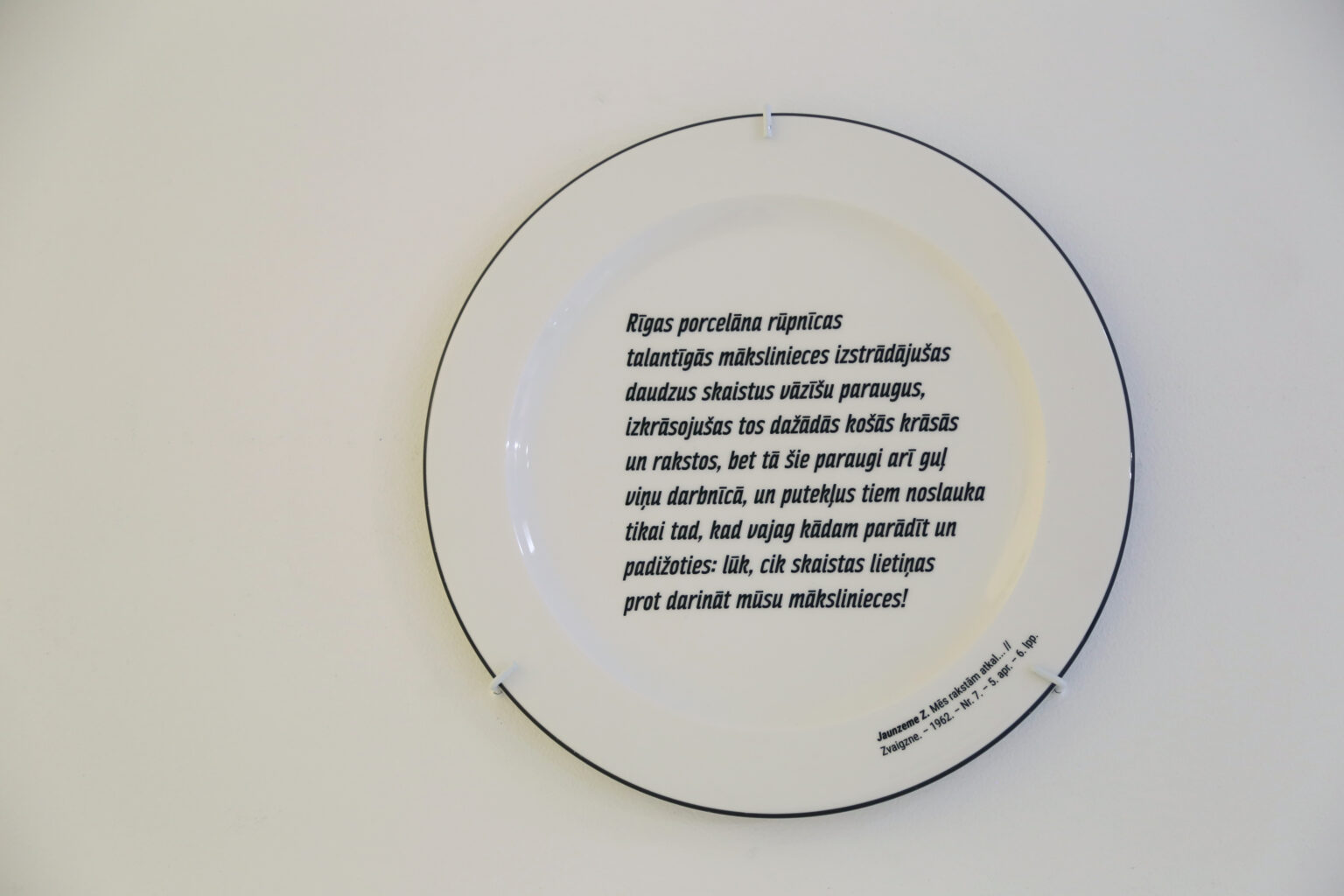
Ieva Melgalve, Adele Bea Cipste Ways of Forgetting The Faded Image of Women Artists in Periodicals of the Latvian SSR http://miejsce.asp.waw.pl/ways-of-forgetting-the-faded-image-of-women-artists-in-periodicals-of-the-latvian-ssr/
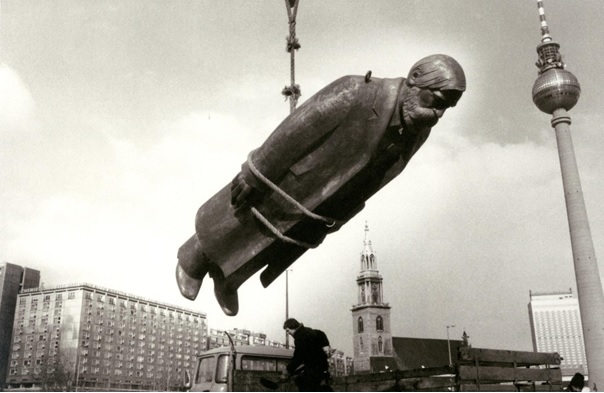
Anne Pfautsch The Archive of Sibylle Bergemann. Questions of Memorialisation and Reinterpretation http://miejsce.asp.waw.pl/the-archive-of-sibylle-bergemann-questions-of-memorialisation-and-reinterpretation/
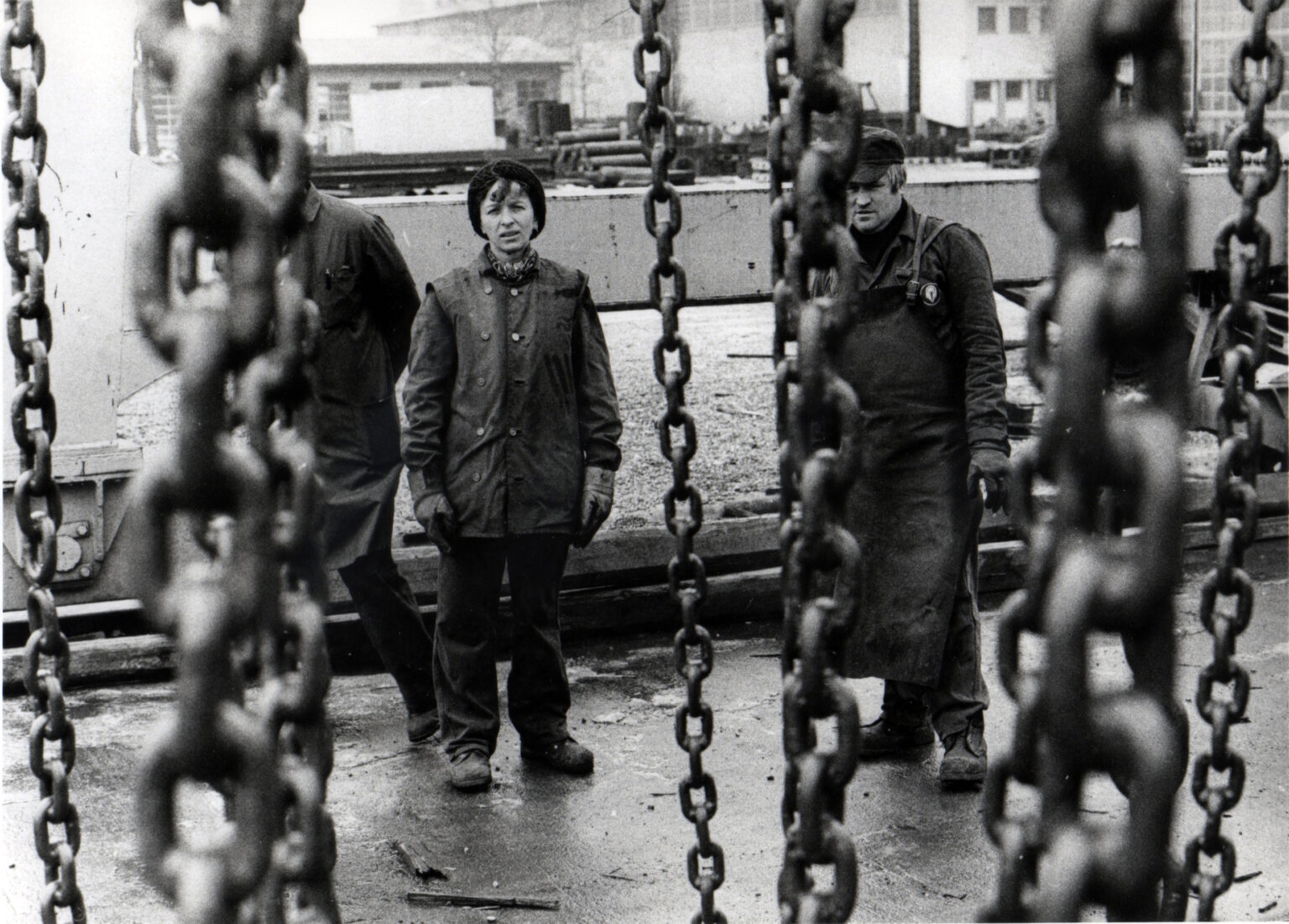
Miha Colner Triple Exclusion and Fierce Determination. Case Studies of Dragica Čadež & Duba Sambolec http://miejsce.asp.waw.pl/triple-exclusion-and-fierce-determination-case-studies-of-dragica-cadez-duba-sambolec/
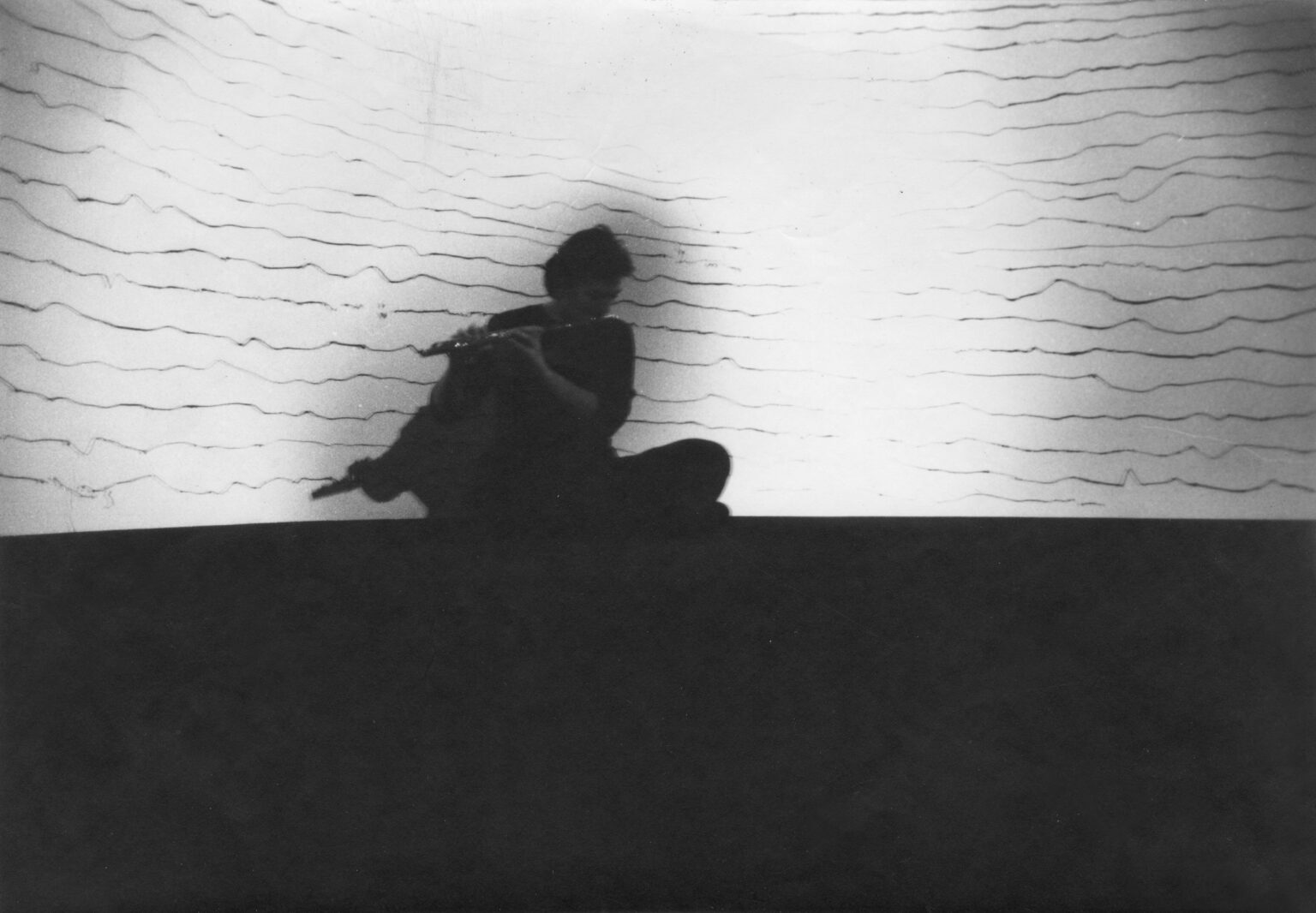
Slađana Petrović Varagić Towards the Reinterpretation of the 1980s in Yugoslavia. Research in Dragana (Jovanović) Žarevac’s Performance Archive http://miejsce.asp.waw.pl/towards-the-reinterpretation-of-the-1980s-in-yugoslavia-research-in-dragana-jovanovic-zarevacs-performance-archive/
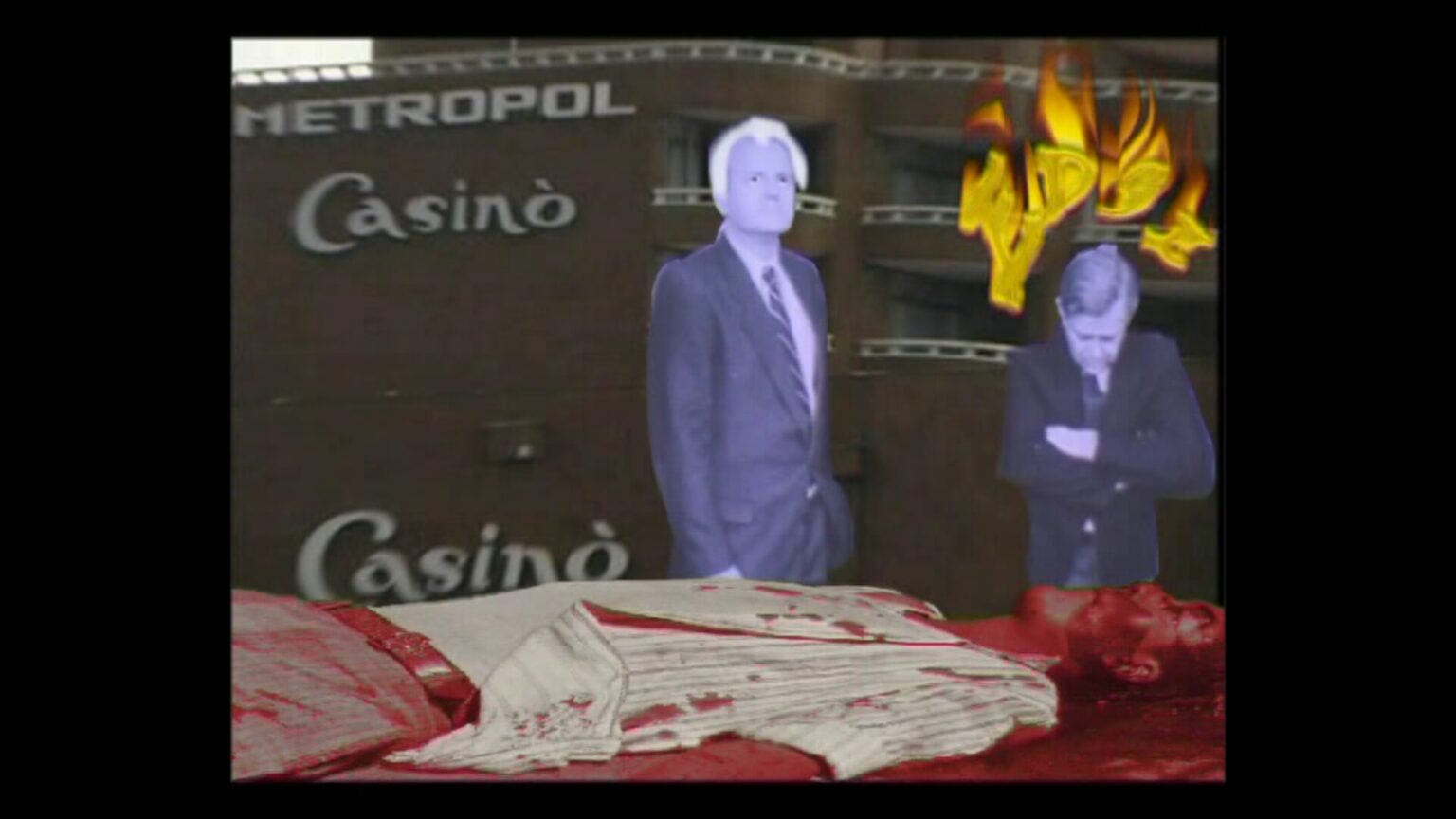
Łukasz Mojsak Between History and the Future. On Sonja Savić’s Videos http://miejsce.asp.waw.pl/between-history-and-the-future-on-sonja-savics-videos/
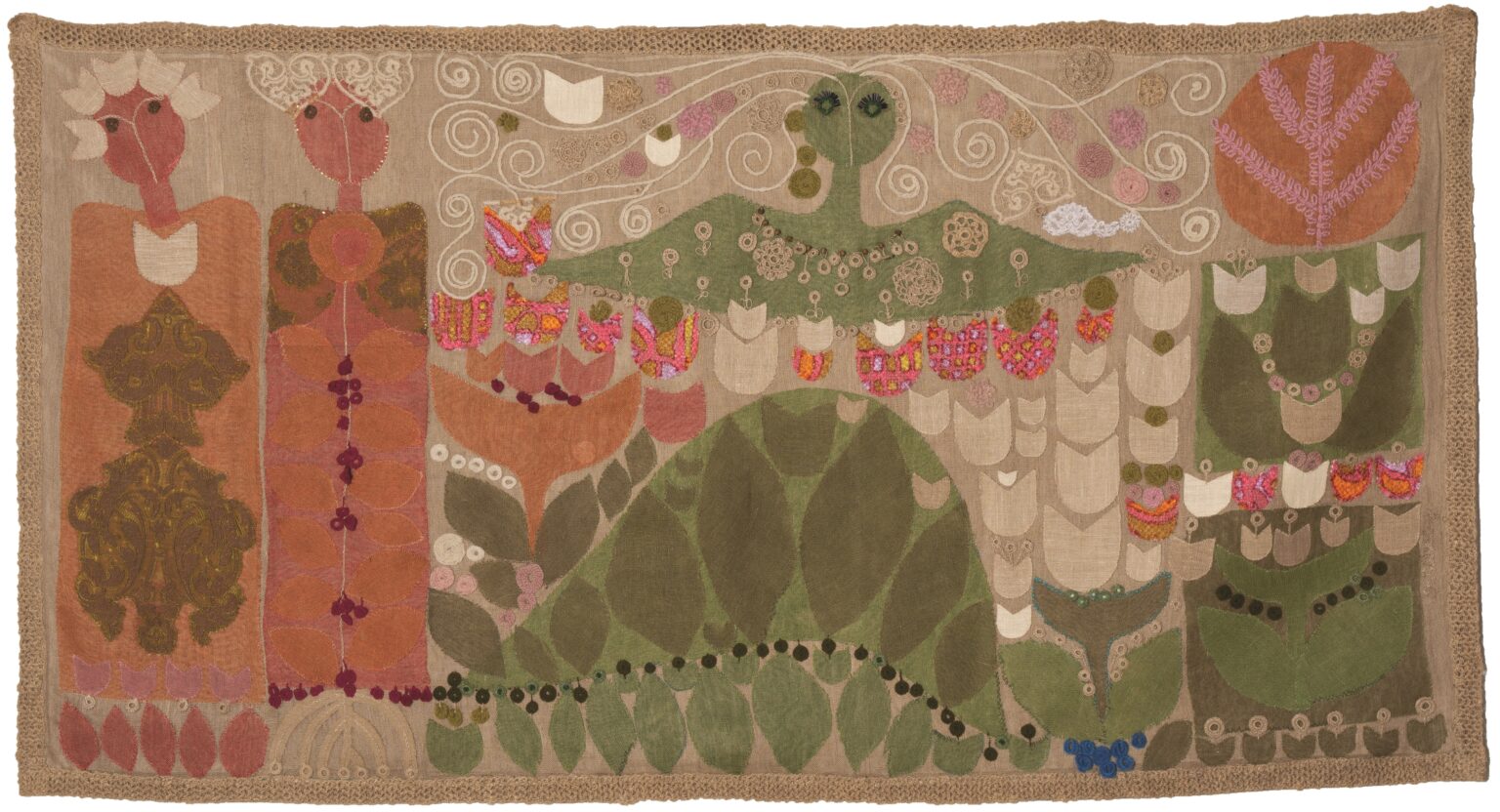
Kata Balázs Little Material, Lot of Thought
Margit Szilvitzky’s Early Works in the Context of the Hungarian ‘New Textile’ Movement http://miejsce.asp.waw.pl/little-material-lot-of-thought-margit-szilvitzkys-early-works-in-the-context-of-the-hungarian-new-textile-movement/
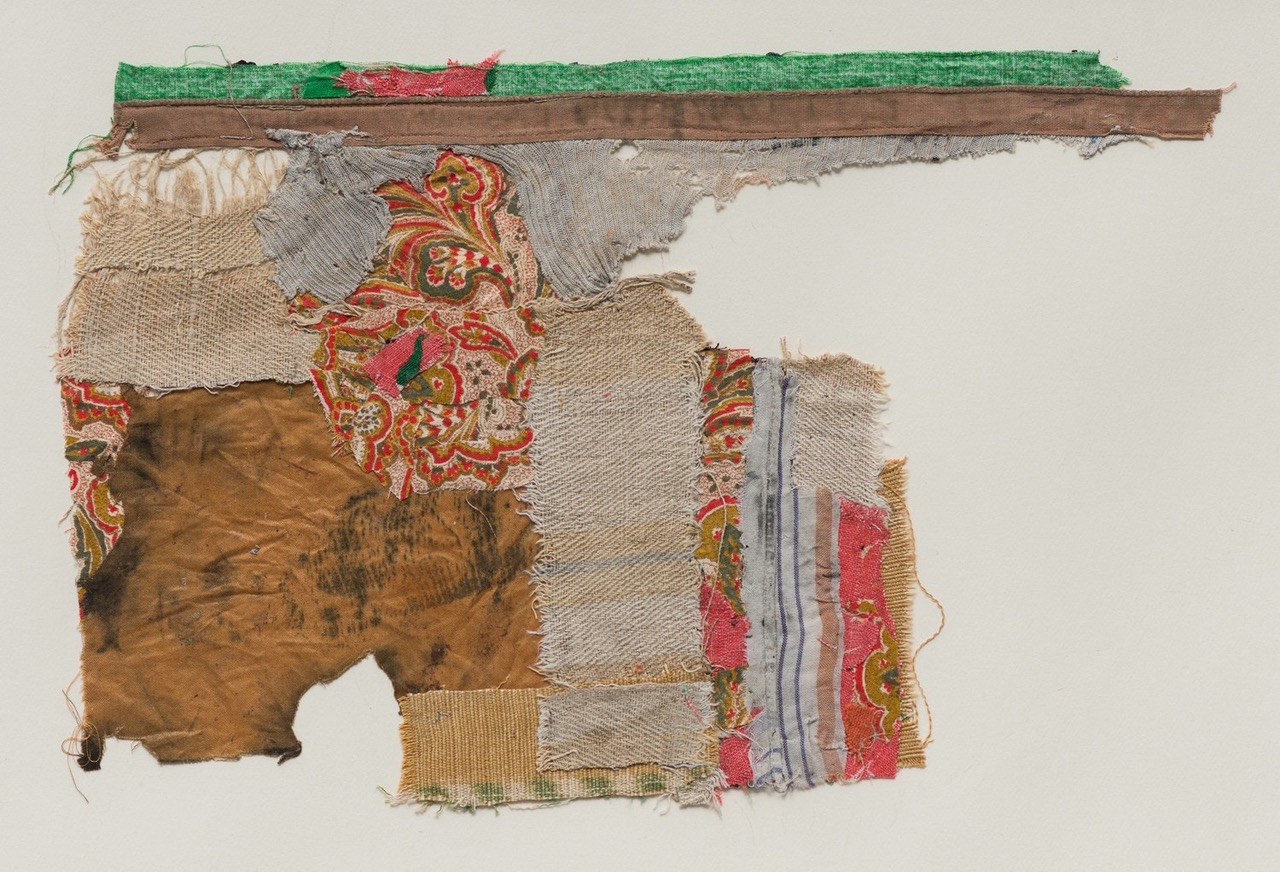
Stefanie Proksch-Weilguni Unravelling the Fibre Art of Geta Brătescu http://miejsce.asp.waw.pl/unravelling-the-fibre-art-of-geta-bratescu/
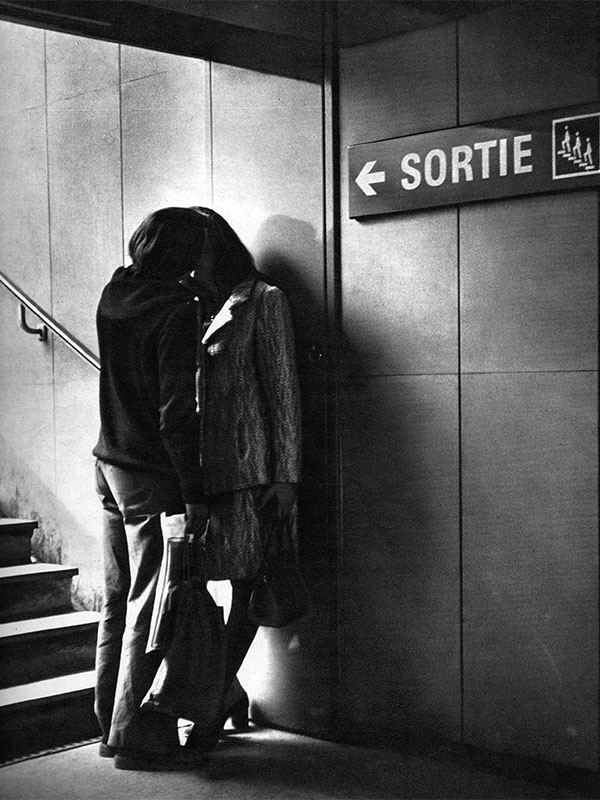
Uschi Klein Picturing the Female Gaze. Photography as a Form of Cultural Resistance during Romania’s Communist Era http://miejsce.asp.waw.pl/picturing-the-female-gaze-photography-as-a-form-of-cultural-resistance-during-romanias-communist-era/
Subsidized by the Ministry of Culture and National Heritage from the Fund for Cultural Promotion and Creative Europe Program. Supported by the Academy of Fine Arts in Warsaw
3 + 3 = 6 Three Women Artists, Three Art Practices, Six Decades ̶ Part Two
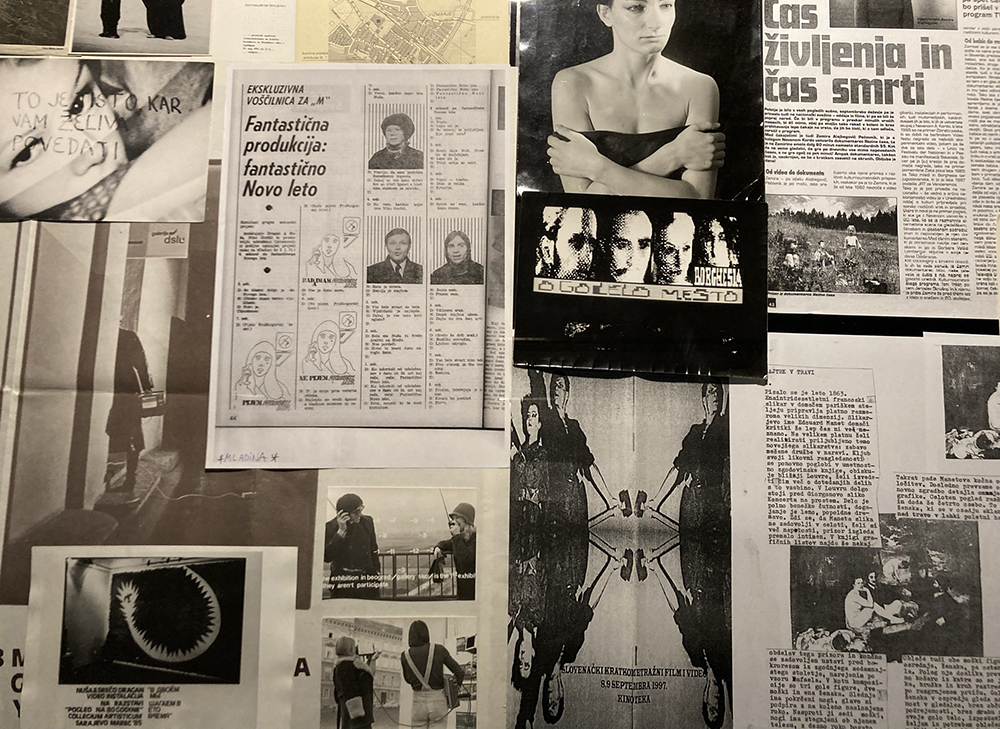
Women artists: Ana Nuša Dragan, Zemira Alajbegović, Ema Kugler
Curated by: Barbara Borčić & Peter Cerovšek
Production: SCCA-Ljubljana 2021
Exhibition Part Two: Project Room SCCA, Metelkova 6, Ljubljana: 21. 09. – 08. 10. 2021
Exhibition Part One: The City Hall Glass Atrium, Mestni trg 1, Ljubljana: November-December 2020
The exhibition presents video works, films, objects and documents by three women artists who were/are active in the field of action/performance, film and video art in Slovenia. Costumes, posters, flyers, catalogs, photographs, texts, critics and other paraphernalia from private archives, archives of SCCA and the MGLC archives will be on display.
The beginnings of their activities date back to different periods of the 20th century: the 1960s (Dragan), the 1980s (Alajbegović) and the 1990s (Kugler). They have always worked in collaboration with numerous artists and in tune with the challenges of time, either in frame of socialist system or the one of liberal capitalism. The specific conditions of production have thus largely defined their artistic practices, ranging from Conceptual and Alternative to Post-Modern Art. After a period of different collaborations – from groups to doubles – the overall authorship became a distinctive feature of their practices. The film / video was a central expression asset for them, and the basis for it is often a live event, from happening and action to performance. Their distinctive narration is moving from documentary and performance to poetic.
Research, documentation and archiving of artistic opuses is one of the key program orientations of the SCCA-Ljubljana, especially those who have not yet received a comprehensive handling. With the project, we want to provide access to information, documents and works of art, initially in physical form at the exhibition, then also in a common online repository, www.forgottenheritage.eu. Artworks and events are all too often disappearing in oblivion and are deleted in a historical – personal and collective – memory. Archiving is based on the model of the documentation, archivist and research project Videodokument: Video art in Slovenia 1969-1989 (1999-2000), international seminars and workshops of Archiving Practice (2005-2021) and the DIVA Station, which allows access to information and media / video works from Slovenia in the Project Room SCCA and through the on-line archive http://www.e-arhiv.org/diva.
The exhibition is a part of the European project Not Yet Written Stories – Women Artists’ Archives Online (2020–2021), which focuses on women artists who have often been overlooked in the history of contemporary art and will create, through research, archives of artists available in a common online repository.
Project participants: Barbara Borčić and Peter Cerovšek (project leaders); Zemira Alajbegović, Ema Kugler, Barbara Borčić, Ida Hiršenfelder, Rok Kajzer Nagode, Blaž Lukan, Borko Radešček in Jake Yuzna (presentations and workshops).
The conference Not Yet Written Stories. Women Artists in Central and Eastern Europe: 2-3 of September 2021
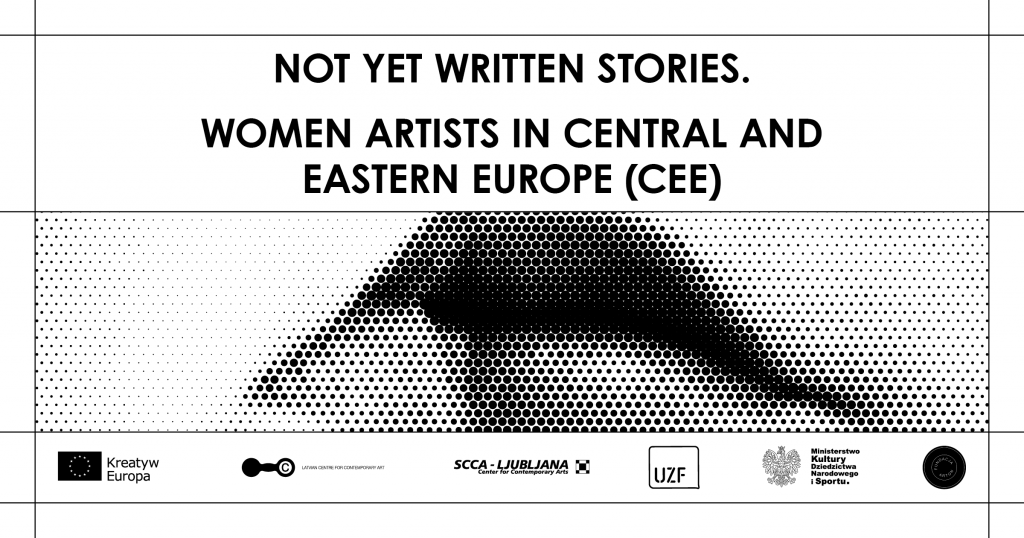
registration link: https://app.evenea.pl/event/nyws/
Conference organising committee: Barbara Borčić, Sandra Križić Roban, Marika Kuźmicz Lana Lovrenčić, Andra Silapētere
Organisers: Arton Foundation, Latvian Centre for Contemporary Art- LCCA Riga, Center for Contemporary Arts – SCCA-Ljubljana & Office for Photography, Zagreb
Official language of the conference: ENG, the conference will be translated to Polish and will be held in Warsaw time.
We would like to invite you to take part in the conference Not Yet Written Stories. Women Artists in Central and Eastern Europe, which will be held on 2–3 September as an online event (on the Zoom platform). The conference is organised by the Arton Foundation (Warsaw), the Latvian Center for Contemporary Arts (Riga), SCCA-Ljubljana, Center for Contemporary Arts, (Ljubljana) and the Office for Photography (Zagreb). The scholarly sin of omission, and the exclusion of works by women from the canon of art history have resulted in the erasure of the achievements of numerous women artists. Such “amnesia” in history writing processes has been widespread and has been happening regardless of the socio-political situation. However, women artists as well as art historians, critics, curators and gallerists in culturally and economically “peripheral” countries, such as those behind the Iron Curtain, and in the former Yugoslavia, have been at risk of double exclusion on the grounds of both geography and gender. In parallel to the development of new states and socialist societies after WW2, women built themselves up not only politically and culturally, but also artistically. Nevertheless, instead of the anticipated advancement of women in various fields, society and its power structures continued to support the traditionally predominant patriarchal view. To counteract that situation, the Arton Foundation (Warsaw), the Latvian Centre for Contemporary Arts (Riga), SCCA-Ljubljana, Center for Contemporary Arts (Ljubljana), and the Office for Photography (Zagreb) in 2019 collectively launched the project Not Yet Written Stories: Women Artists’ Archives On-line. It focuses on women artists from Poland, Latvia, Croatia and Slovenia in order to raise awareness of recent historical events in Central and Eastern Europe and consequently stimulate new readings of history. The project not only maps regional contexts and collaborations, but also aims to reconsider common points of history-writing processes while investigating gender in a social, political, cultural, and artistic context within Central and Eastern Europe. Taking this project as the starting point, the partners are now organising the conference Not Yet Written Stories. Women Artists in Central and Eastern Europe. The conference presents a wide context of the roles of women in the arts and culture with papers reflecting the topics in twelve countries, from Latvia to Bulgaria and from Ukraine to Croatia.
The two-day conference will comprise seven panels devoted to issues such as the work of women artists in the field of both new media and textiles, for example, women’s artistic education, socially and politically engaged art, and many others.
The conference will be inaugurated by a lecture by Professor Leonida Kovač entitled Subversion of the normative heterosexuality in the self-representational works of Nasta Rojc.
The accompanying events will include the screening of Sonja Savić’s films and a performance by Ana Čigon entitled Dear Ladies, Thank you (2011-2013)
The project is part of the Creative Europe program. Co-financed by the Polish Ministry of Culture, National Heritage and Sport. If you have any questions, please contact Dr Marika Kuźmicz
Conference programme:
02.09.2021
9.00 – 10.00 AM
Lecture Subversion of the normative heterosexuality in the self-representational works of Nasta Rojc by Leonida Kovač.
Leonida Kovač, PhD is an art historian and theorist, curator and the full professor at the University of Zagreb, Academy of Fine Arts. She is concerned with contemporary art, feminist theories and critical theories. She has curated several retrospective exhibitions of women artists, to mention here Dorothy Cross, Rita Duffy, Katarzyna Kozyra, Orshi Drozdik, Nan Hoover, Duba Sambolec, Edita Schubert, Nasta Rojc. She published nine books among which are Anonimalia: Normative Discourses and Self-representation of 20 th Century Women Artists (2010); Tübingen’s Box: Essays on Visual Culture and Biopolitics (2013); In the Mirror of the Cultural Screen: Jagoda Kaloper (2013); Mrđan Bajić: Disenacting Transversals (2016) and numerous academic articles. She was curator of the Croatian Pavilion at Sao Paulo Biennale in 2002, and at Venice Biennale in 2003. From 2002 to 2005 she was the elected Vice-president of the International Association of Art Critics – AICA. She has organized and co-organized several international academic conferences, the most recent is Memory, Word and Image: W. G. Sebald’s Artistic Legacy (University of Amsterdam, 2019)
Panel #1
10.00 – 11.30 AM
moderator: Marika Kuźmicz
Urška Savič Reflections on the Archive as Strategy for Re-writing Histories
Karolina Majewska-Güde Telling Stories about Feminist Art in Socialist Europe, or an Archive as a Place of Cross-Generational Re-doing
Tia Čiček Examining women’s roles at the ŠKUC Gallery in the 1980s
Wanda Janakiewicz Urszula Czartoryska as theoretician and founder of the Photography Department at the Museum of Modern Art in Łódź
Panel #2
12.00 – 13.30 PM
moderator: Andra Silapētere
Tatiana Bogacheva Social Reproduction in the Eastern European Art
Anne Pfautsch The Archive of Sibylle Bergemann: Questions of Memorialisation and Reinterpretation
Miha Colner Triple exclusion and fierce determination: Case Studies of Dragica Čadež & Duba Sambolec
Panel #3
14.30 – 16.30 PM
moderator: Barbara Borčić
Kateryna Iakovlenko Art Between Manhood and Activism: Role of Ukrainian Women Artists During Political Transformations
Adele Bea Cipste and Ieva Melgalve Ways of Forgetting: The Faded Image of Women Artists in Periodicals of the Latvian SSR
Magdalena Worłowska Spiritual and Rational Witches – Ecological Art of Female Artists in The Polish People’s Republic
18.00 PM
Screening of the performance Dear Ladies, Thank you (2011-2013) by Ana Čigon
Ana Čigon (b. 1982) is an artist from Slovenia who mainly works in video, film, animation and performance. Having received a BA in Painting and an MA in Video from the Ljubljana Academy of Fine Arts and Design, she was awarded an MA in Interface Cultures by the University of Art and Design Linz (Kunstuniversität Linz) in Austria. Her documentary films mostly deal with feminist and social issues. She is also a video artist for theatre and an active contemporary visual artist who has shown her works at individual and collective exhibitions in Slovenia and internationally, receiving awards and nominations for her video works and films.
Day 2
03.09.2021
Panel #1
9.00 – 10.30 AM
moderator: Barbara Borčić
Slađana Petrović Varagić Archiving female performance in Yugoslavia – Dragana (Jovanović) Žarevac
Iliyana Nedkova Why Have There Been No Great Contemporary Bulgarian Women Artists?
Kateřina Štroblová There Is Nothing Like Women’s Art. Work, Positions and Emancipation of Female Artists in Czechoslovakia during the Normalisation Period
Panel #2
11.00 AM – 13.00 PM
moderator: Marika Kuźmicz
Ivor Glavaš The figure of the woman author: Tatjana Ivančić
Łukasz Mojsak Between History and the Future. On Sonja Savić’s Videos
Panel #3
14.00 – 15.30 PM
moderator: Andra Silapētere
Kata Balázs Little material, lot of thought Margit Szilvitzky and experimental textile / fibre art
Stefanie Proksch-Weilguni Unraveling the Fibre Art of Geta Brătescu
Johana Lomová Exclusion through specialisation Membership of Women Artists in the Czechoslovak Artists´ Union in the 1950´s and 1960´s and its consequences for writing art history
Eda Tuulberg The Abdomen is Over-Etched
Panel #4
16.00 – 17.30 PM
moderator: Lana Lovrencić
Uschi Klein Picturing the female gaze: photography as a form of cultural resistance during Romania’s communist era
Maria Anna Rogucka Alina Ślesińska’s Self-awareness? Why and What Kind of Artist’s Image Creation through Photographs in Mass Printed Media?
Tihana Rubić & Ana Šeparović The Construction of Gender in Interwar Photography: An Interdisciplinary View
Šelda Puķīte & Indrek Grigor Silver girls: Retouched history of photography
19.00 PM
Screening of the films by Sonja Savić:
Play, 1997, 22’
Superreal (Superstvarnost), 1997, 57’
Sonja Savić b. 1961 in Čačak, Serbia. Following her debut in 1977, Savić became a star actress of 1980s post-Yugoslav mainstream cinema. In the 1990s, she focussed on independent work in theatre and visual arts, as the founder of an alternative theatre group and a video artist. Her little-known video productions engage with the Ex-Yugoslav counter cultural and artistic scene, as well as the troubled history of the Balkans in the 1990s. Based on the manipulation of found footage and staged acting scenes, these pieces feature a dynamic, trancy collage aesthetic that interweaves and loops motifs and imagery. Savić died in 2008 in Belgrade. Her estate is in the custody of the Nadežda Petrović gallery in Čačak.
Courtesy Nadežda Petrović Gallery, Čačak, Serbia
Exhibition ‘Three Things I Love in Life…’ on display until 15th of Sept.
You are welcome to visit lokal_30 gallery lokal30.pl and Arton Foundation http://fundacjaarton.pl Wed–Sat noon – 6pm until 15th of Sept.
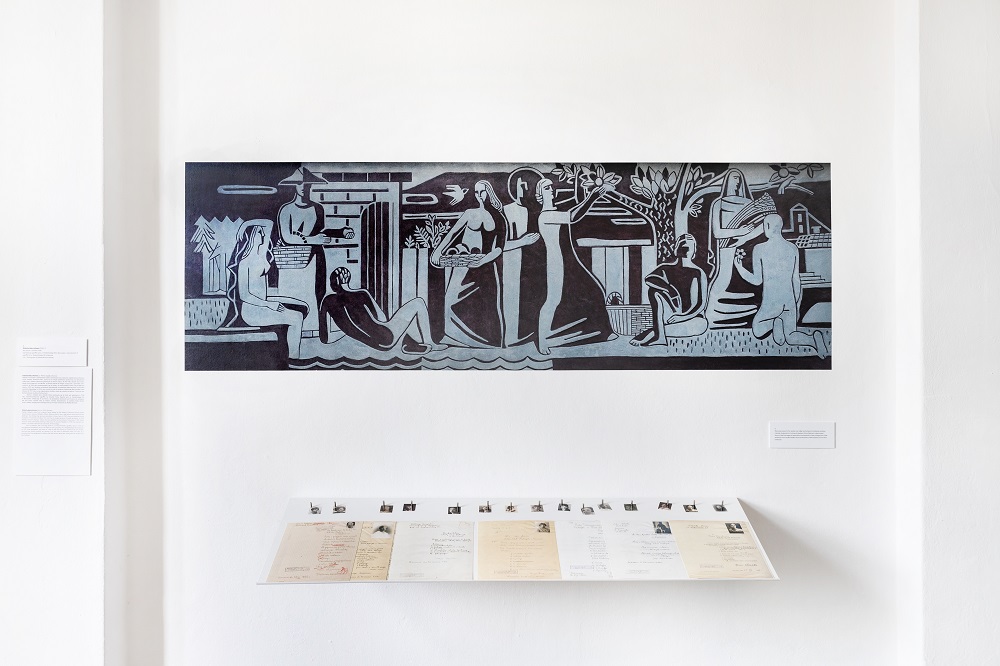
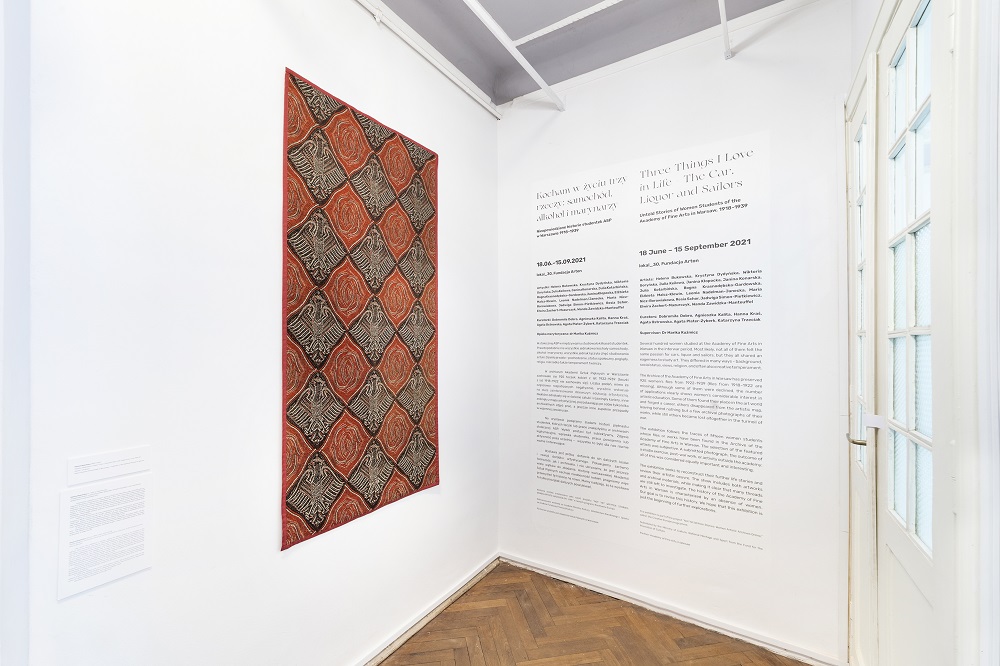
‘Remember Her Name’: the cycle of podcasts dedicated to the women artists
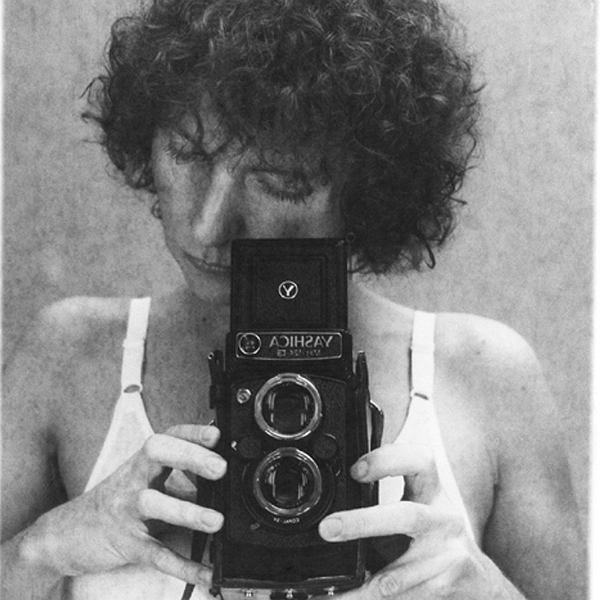
The podcast ‘Remember Her Name‘ is a series of talks about women artists. Its aim is to share stories about their oeuvres and make their artistic practice more visible than it currently is in the discourse.
We strive to counteract the wave of forgetting which often leaves many women artists in the margins of the artistic scene. The interviews with the artists themselves or individuals from the artistic milieu (art historians, theoreticians, curators, lecturers) usually focus on the discussion of one piece from the artist’s body of work. Giving the idea about the character of chosen artistic practices, we introduce women creators from the countries of Eastern and Central Europe, making their artistic work familiar
to the international audience.
The series is a part of the project Not Yet Written Stories – Women Artists’ Archives Online within the Creative Europe program. The cycle is curated by Julia Kusiak from Arton Foundation.
Julia Kusiak talks to Anna Kutera:
Marika Kuźmicz about Jadwiga Singer:
Leonida Kovač & Sandra Križić Roban about Edita schubert:
Julia Kusiak talks to Iwona Lemke Konart:
Julia Kusiak talks to Teresa Gierzyńska:
Broadcasts about the exhibition ‘Three Things I Love in Life…”
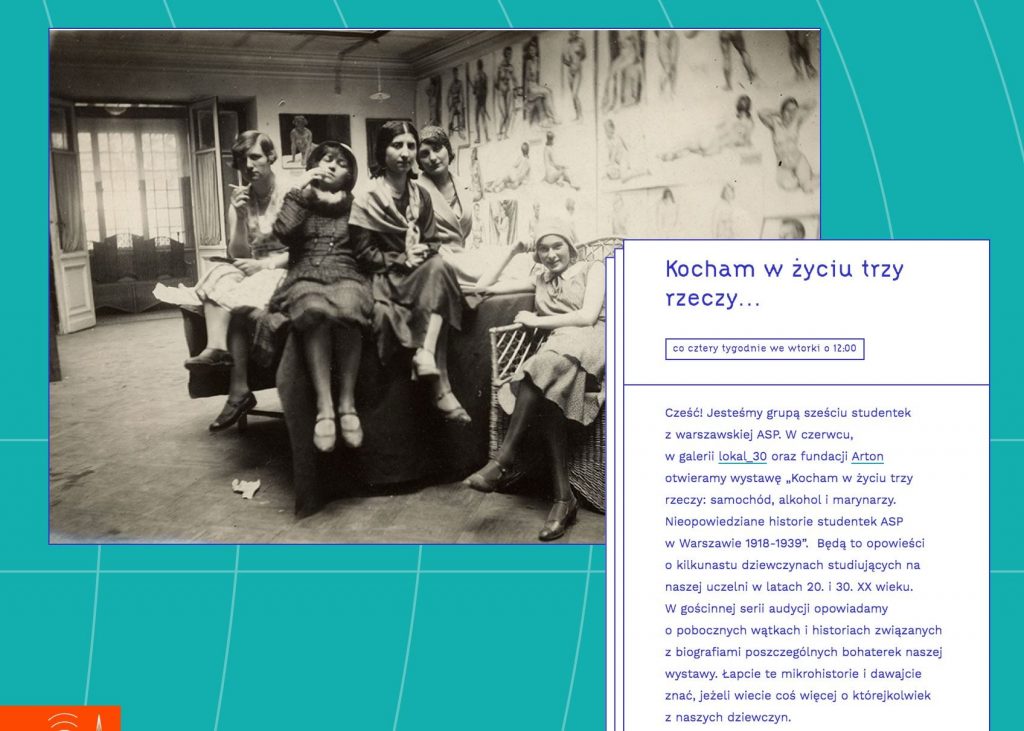
Our exhibition „Three Things I Love in Life…” is accompanied by a series of radio broadcast hosted at Radio Kapitał. From the shows you can learn about our exhibition’s heroines or listen about subjects loosely connected to the issues addressed by the exhibition. To this moment, we have released three shows – about women’s rallies, an interview with Mira Schor (daughter of one of our artists, Resia) and a review of women’s press from the interwar period. You can listen to these programs at Radio Kapitał archives!
https://radiokapital.pl/shows/kocham-w-zyciu-trzy-rzeczy
Cut and Paste: Collages of Inka Švertasek and Nada Vrkljan-Križić
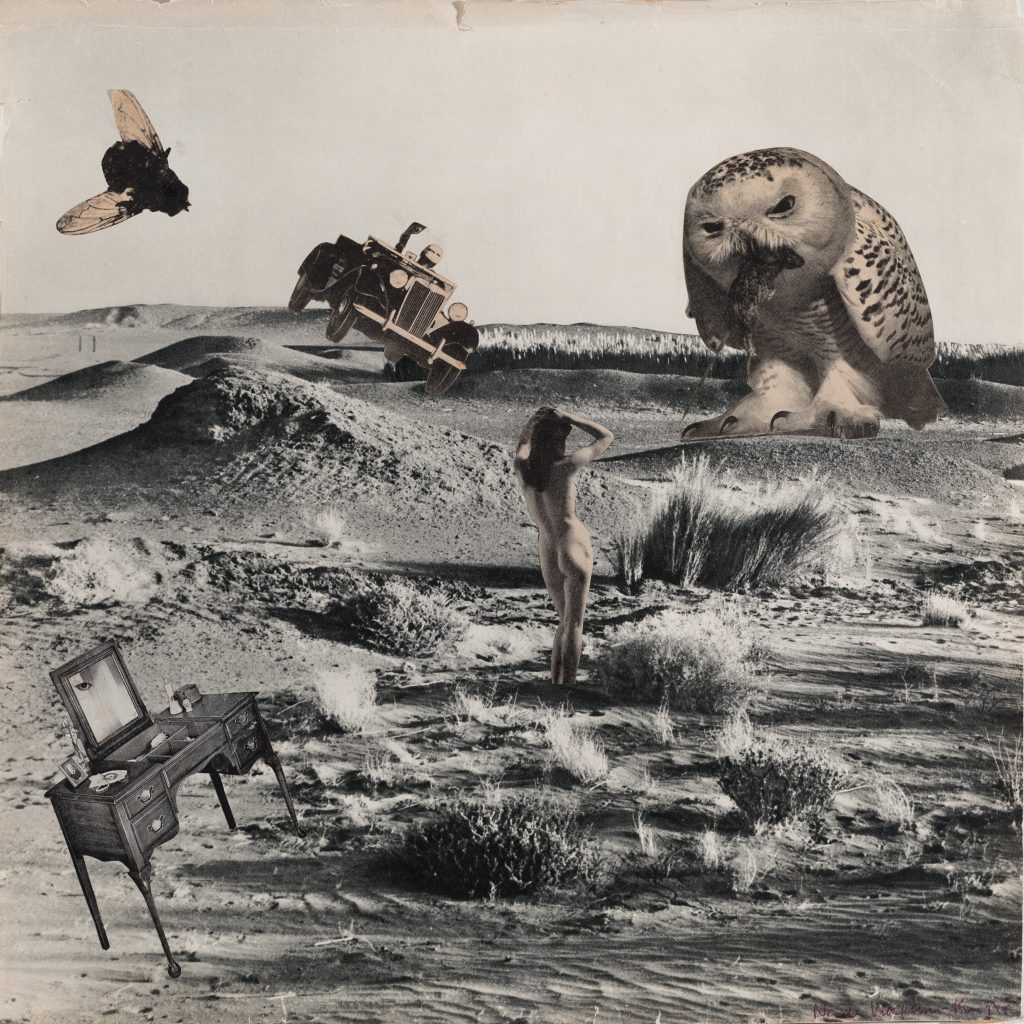
Two women, in the same city, at the same time. Leaning over their artworks at some point in the day, or evening, after all the other tasks have been taken care of. It is almost certain that they never met.
Now, 60 or so years later, their collages meet for the first time, on the walls of the Spot Gallery, thus achieving a shift in the comprehension of the nature of this artistic medium and the feminist stance discernible in their compositions.
During the 1960s, Nada Vrkljan-Križić (1940 – 2012), an art historian and romance languages scholar, and Inka Švertasek (1920 – 2014), a self-taught artist, created a series of intriguing collages. The Office for Photography is showcasing a selection of their works, attempting to shed light on the
position of women in contemporary Croatian art and experimentation in the field of photography. Inka’s collages were discovered relatively recently and are exhibited for the first time, while several of Nada’s collages were displayed as part of the 1972 exhibition, Surrealism and Croatian Visual Art,
curated by Igor Zidić. The two artists’ collages were created outside of the usual arrangements, predominantly in a domestic setting, subject to limitations of time and other constraints. Their choice of the visual material used reveals a propensity for the atricalization and scenographic ideas
(Švertasek), as well as a conscious examination of the political, social and intimate moment (Vrkljan-Križić). These are photomontages and collages in the realm of the subconscious, allusions addressed by a host of surrealist theorists and authors (Eluard, Bataille), all the way to psychoanalysts and
contemporary male and female theoreticians who regard these sorts of works as one of women’s feminist strategies.
Owing to its features, the collage is intrinsically subject to fragmentation, nonetheless, both cycles attest to a substantial self-awareness and continuity of artistic ideas, which the authors developed over
time. Attempting to lend a contribution to the discussion about the role of collage in feminist art and in postmodernism, and touching upon the notion of collage as an “oppositional” practice containing various hints of and commentaries on the political and social reality, the exhibition draws attention to the frequently solitary position of women authors whose work is revealed gradually and observed from the vantage point of transpired time.
Nada Vrkljan-Križić Croatian art historian (Belgrade, 1940 – Zagreb, 2012). Graduated in history of art and French language and literature from the Faculty of Humanities and Social Sciences in Zagreb in 1970. Worked at the Regional Institute for the Preservation of Cultural Heritage (1972–81), was a
curator at the Gallery of Primitive Art within the Galleries of the City of Zagreb (1981–94), and later worked at the Museum of Contemporary Art (1995–2004) in the capacity of museum advisor and acting director of the institution. She published a number of scientific texts in the field of museology, numerous art reviews, studies and exhibition curatorial texts. She is the author of a number of exhibitions of naive painting.
Inka (Vinka) Švertasek a self-taught artist (Korčula, 1920 – Zagreb, 2014). Throughout her life she painted, carved wood sculptures, and in the period between 1960s and 1970s she created collages. She exhibited independently at the Korčula Town Museum in 2012.
The exhibition is part of Not Yet Written Stories : Women Artists’ Archives Online, an international research project funded by Creative Europe, in which Office for Photography collaborates with the
Arton Foundation in Warsaw, SCCA – Centre for Modern Art in Ljubljana and the Latvian Centre for Contemporary Art in Riga. The aim of the project is to incorporate the works of women artists, mostly excluded from European history of art, into public discourse about visual arts in order to avert their further discrimination. The exhibition is supported by City of Zagreb, Ministry of Culture of the Republic of Croatia, Kultura Nova Foundation and Creative Europe
Three Things I Love in Life: the Car, Liquor, and Sailors:Untold Stories of Women Students of the Academy of Fine Arts in Warsaw, 1918–1939
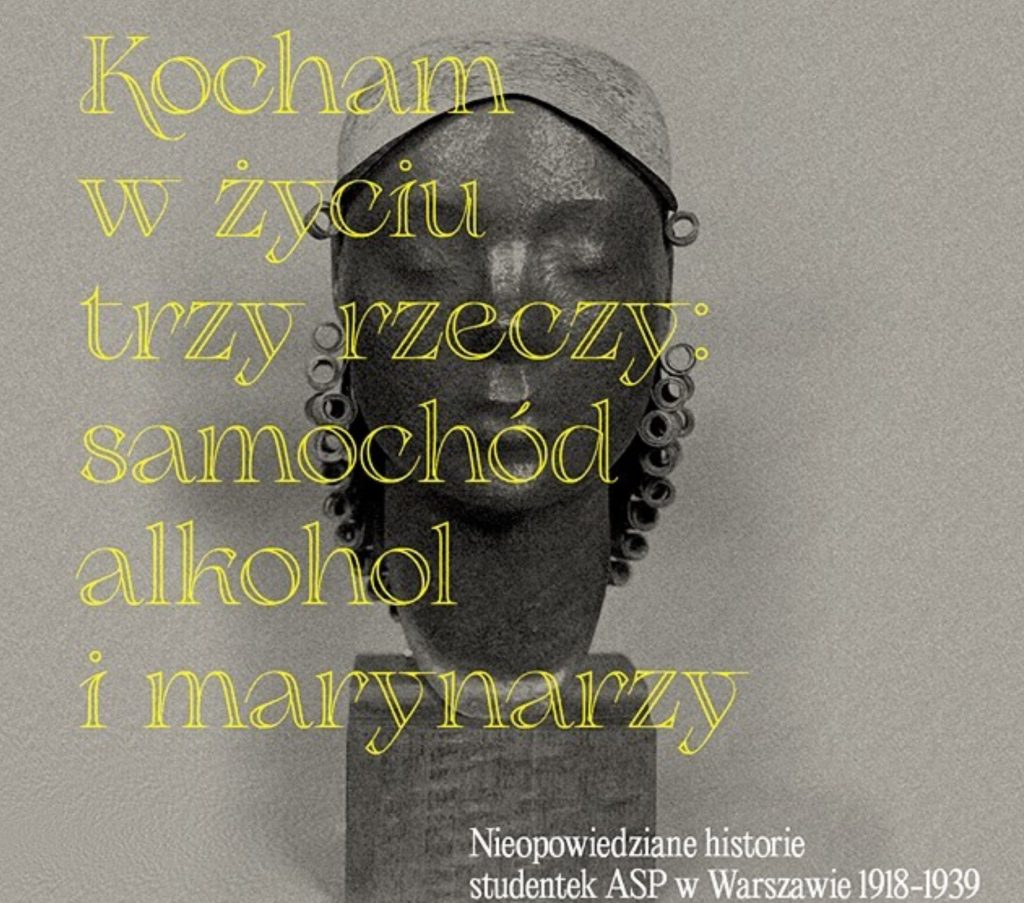
WHEN: 18 June 2021 — 15 September 2021
WHERE: lokal_30 gallery, Wilcza 29a/12, 00—544 Warsaw, Arton Foundation, Foksal 11/4, 00-372 Warsaw
CURATORS: Dobromiła Dobro, Agnieszka Kalita, Hanna Kraś, Agata Ostrowska, Agata Plater-Zyberk, Katarzyna Trzeciak
Nearly one thousand women students studied at the Academy of Fine Arts in Warsaw in the years 1918–1939. Not all of them most likely felt the same passion for cars, liquor and sailors, but all of them shared the zeal for studying art. They differed in many ways – in terms of their background, social status, views, religion, and often also creative temperament. Some of them fought for their position in the art world, while others settled down by their husbands, abandoned artistic careers or became lost altogether in the war turmoil.
We follow the traces of more than a dozen women students, seeking to investigate their biographies and restore the memory of women who have thus far been denied a deserved place in history.
Three Things I Love in Life: the Car, Liquor, and Sailors is an exhibition organised by women students of the Faculty of Management of Visual Culture at the Academy of Fine Arts in Warsaw in collaboration with the Arton Foundation and lokal_30 gallery. The show forms part of the international project Not Yet Written Stories: Women Artists’ Archives Online, in which researchers from Poland, Croatia and Latvia study archives of local institutions in search for traces of forgotten women artists.[1] The exhibition at lokal_30 (18 June – 15 September 2021) results from the students’ research in the archive of their alma mater.
The archive of the Academy of Fine Arts has preserved files of as many as 926 women students from the years 1918–1939. However, only some of these artists forged artistic careers that secured them a place in Polish art history. Left after most of them is only a hand-written résumé and an enrolment application stored in an archival file. The exhibition tells the stories of sixteen women students of the Warsaw School of Fine Arts (later renamed the Academy of Fine Arts) from the interwar period. The show seeks to follow their histories by discovering their later fate and reviewing their artistic oeuvre.
ARTISTS: Helena Bukowska, Krystyna Dydyńska, Wiktoria Goryńska, Julia Keilowa, Janina Konarska, Julia Kotarbińska, Bogna Krasnodębska–Gardowska, Janina Kłopocka, Elżbieta Malcz–Klewin, Leonia Nadelman/Janecka, Maria Nicz–Borowiakowa, Jadwiga Simon–Pietkiewicz,
Resia Schor, Elwira Zachert–Mazurczyk, Wanda Zawidzka–Manteuffel
The exhibition forms part of the “NOT YET WRITTEN STORIES: WOMEN ARTISTS’ ARCHIVES ON-LINE” project within the Creative Europe programme
Subsidized by the Ministry of Culture and National Heritage from the Fund for the Promotion of Culture
Media patronage: TVP Kultura, Blok Magazine, Magazyn SZUM
Call for Papers: Not Yet Written Stories. Women Artists in Central and Eastern Europe (CEE)

Call for Papers: Not Yet Written Stories. Women Artists in Central and Eastern Europe (CEE)
Arton Foundation (Warsaw), Latvian Centre for Contemporary Arts (Riga), SCCA-Ljubljana, Center for Contemporary Arts (Ljubljana), Office for Photography (Zagreb) invite for the conference Not Yet Written Stories. Women Artists in Central and Eastern Europe (CEE) will be held in Warsaw in the first week of September 2021. The conference will take place at the Academy of Fine Arts or and depending on the situation with Covid-19 will be organized also in a hybrid format offering online participation. Participants: early career humanities scholars, curators and artists are welcome to apply. Focus: visual arts before 1989 in relation to woman artist experiences and histories in Central and Eastern Europe.
The scholarly “sin of omission” and the exclusion of work by women from the canon of art history have resulted in the erasure of the achievements of numerous artists. Such omissions have been widespread, occurring regardless of socio-political situation. However, women artists as well as art historians, critics, curators, gallerists in culturally and economically “peripheral” countries, such as those formerly behind the Iron Curtain and former Yugoslavia, have been at risk of double exclusion on the grounds of both geography and gender. While rebuilding new states and socialistic societies after WW2., women built themselves up not only politically and culturally, but artistically as well. But instead of anticipated advancement of women in various fields, society continued to support the domination of the traditional patriarchal view. To counteract that situation and with the wish to raise bigger awareness of these issues as well as proposing new ways of history reading Arton Foundation (Warsaw), Latvian Centre for Contemporary Arts (Riga), – SCCA-Ljubljana, Center for Contemporary Arts (Ljubljana), and Office for Photography (Zagreb) in 2019 collectively started the project “Not Yet Written Stories: Women Artists Archives On-line”. The project studies the heritage of women artists in Poland, Latvia, Croatia and Slovenia with the aim to recuperate the lost or omitted histories of women artists and broaden our understanding of recent past. The project maps not only regional contexts and collaborations, but also aims to reconsider common points of history writing processes investigating gender in social, political, cultural, and artistic context within Central and Eastern Europe.
Taking the project initiative and research already completed as the starting point, partners are organizing a conference Not Yet Written Stories. Women Artists in Central and Eastern Europe (CEE)
Throughout the regions we are facing erasure of women from the art scene, followed by the notion that behind the Iron Curtain they are less recognised due to the low awareness of women artists while the “second wave” of feminism and the reception of feminist theories and practices in general are still unexplored in the context of art and potential connections between women artists and feminists. Women artists were culturally and economically peripheral, outside the mainstream of the art world, and at risk of double exclusion, due to issues of both geography and gender.
By this conference we want to recognize this situation, and educate a new generation of researchers, art historians and cultural experts who are aware of this state of affairs and have the knowledge and tools to bring some positive changes.
The conference aims to provide a space for researchers, scholars and artists to network on some topics of mutual interest, and through the event discuss the suggested topics, among others:
- How do we locate and treat “lost” women artists? What social and historical reasons have shaped domination over women in CEE? How can we define the reasons of women artists’ marginalization?
- How gender roles were conceptualized in Central and Eastern Europe and what discourses related to gender circulated in socialist states? Emancipated during WWII, marginalized in the post-war period: how patriarchal society treated women despite declarative gender equality (proclaimed by state), and how does this situation reflect in art circles? How can we shape the position of women artists in art history while reconsidering socialist unfulfilled equality?
- How did women artists see themselves during the Soviet period or in Yugoslavia? What were the problems they were facing? What was the treatment of women studying at the art academies (huge in numbers, almost invisible outside school)? Have there been local or global formal and informal initiatives / institutions / collectives devoted to women artists in Central and Eastern Europe?
- Women Artists’ practice – documentation and memorialisation of their work. How can we build an alternative future by revisiting the past and reinterpreting archives? What can we learn about current political, social and feminist struggle while rethinking recent past?
- What kind of strategies can we develop to appreciate women artists? Do we need institutions devoted exclusively to women artists? If yes, what kind of?
- How has “socialist solidarity” impacted history writing? How gender relations are imaged and represented in visual arts?
- What was the role of women in the art field in this period – curators, gallerists and art critics alike? Do we remember them in our art histories today or are they too marginalised and/or forgotten?Truth or dare: women art critics promoting women artists?
Deadlines:
15. 1. 2021 – proposal submission deadline (in English only, max. 2000 characters, including spaces)
25. 1. 2021 – Notification of acceptance
5. 4. 2021 – delivery of papers with illustrations
6. 5. 2021 – editors comments sending to the authors
5. 6. 2021 – authors sending articles after the initial correction
5. 5. 2021 – 12. 7. 2021 – peer reviews process
12. 7. – 1.9. 2021 sending articles after reviews and preparing shorter versions of the articles as the conference papers
2.-3. 9. 2021 – the conference
December 2021 – launch of the new issue of “Miejsce” magazine
Papers selected for the conference will be published in the new issue of “Miejsce” http://miejsce.asp.waw.pl/en/, the magazine published by the Academy of Fine Arts, Warsaw (printed and online version, journal apply the procedure double blind review). The organizers of the conference will cover travel costs, accomodation and provide fees for the authors of accepted articles. The language of the conference: English.
Please send your proposals for a 20-minute presentation (max. 2000 characters) together with a short bio by 15 January, 2021 to:
BASIC EDITORIAL GUIDELINES: For footnotes please follow the MHRA Style Guide available here: http://www.mhra.org.uk/style/11
Please use Ibid. to refer to a work referenced directly in the previous footnote. Do not use “op. cit.” to refer to a previously footnoted work – please use relevant MHRA Style Guide guidelines: http://www.mhra.org.uk/style/11.3
Titles in the main text
Please use italics for titles of books, magazines, newspapers, and artworks.
Please use single quotation marks for titles of press articles and individual texts in an edited volume, as well as all other parts of a larger body, such as chapters of a book, songs on an album, poems in a poetry collection, etc.
Quotations
Please use single quotation marks for content quoted from other sources.
Please use double quotation marks for quotation within a quotation.
Punctuation marks are to be placed outside quotation marks unless part of the original quoted sentence, such as full stop.
When quoting a complete sentence, the quote should begin with a capital letter even if placed in the middle of a sentence.
Quoted phrases or parts of sentences should not begin with a capital letter.
If a quote is split in half, the second part of the quote should not be capitalised.
Please use ellipsis consisting of three dots when omitting part of a quoted passage. Use run-in quotations with quotation marks in the main text for shorter quoted passages (less than 100 words). Use block quotations without quotation marks for quoted passages longer 100 words. Block quotations are to be set off from the main text with a bigger left-hand margin and potentially a bigger right-hand margin, smaller or different font, reduced line spacing. Quotations are most frequently introduced with a comma. Colon is used when the quoted passage could stand on its own and to introduce block quotations in most cases.
Do not use introductory punctuation when the quoted passage flows directly from the text.
Foreign language quotations should be translated into English even when no previous translation has been published.
Indentation
Mark the beginning of a new paragraph with either first-line indent or spacing between paragraphs. Do not use both.
A first-line indent in the first paragraph of a text or subtext is optional.
Non-English words
Any non-English words are to be set in italics.
Dates
Use the day-month-year for dates, e.g. 6th September 2019.
Decades should not include an apostrophe, e.g. the 1990s.
Centuries should be written as ordinal numerals without superscript, e.g. the 19th century.
Use an en dash for ranges of years, e.g. 1935–1937.
Use BCE (before the Common Era) and CE (of the Common Era).
Numbers
Spell out whole numbers from zero to ninety-nine, use numerals for 100 and above.
Spell out large rounded number, e.g. four thousand years, two hundred artists.
Spell out “percent”, do not use %.
Spell out fractions, e.g. two-thirds, one-fourth.
Use an en dash for ranges of years, page numbers, quantities, etc.
En dash
Please use an en dash with spaces before and after, instead of an em dash, to set apart a phrase or a clause.
Spelling
Please follow the British English (BrE) standard for spelling:
use -re in words such as centre, metre;
use -our in words such as colour;
use -ogue in words such as catalogue;
use -ence in words such as defence, licence;
observe the difference between the verb practise and the noun practice;
use -ise in words such as realise, organise, and -yse in words such as analyse, catalyse, rather than -ize/-yze;
After a short vowel, the final consonant “l” is doubled when adding suffixes:
-ed or -ing to verbs,
-er or -est to adjectives,
-er or -or to form nouns,
e.g. travel – travelled/travelling/traveller, cruel – crueller/cruellest;
Whenever an irregular noun has a double past form, either can be used, e.g. learnt/learned, spelt/spelled;
Other examples of BrE spelling include: aeroplane, aluminium, cheque, cosy, kerb, mould, moustache, sceptical, speciality, tyre.
Supported by Creative Europe
Co-financed by Polish Ministry of Culture and Heritage
THE EXHIBITION “I REMEMBER, THEREFORE I AM. UNWRITTEN STORIES: WOMEN ARTISTS’S ARCHIVES” IN THE LATVIAN NATIONAL MUSEUM OF ART
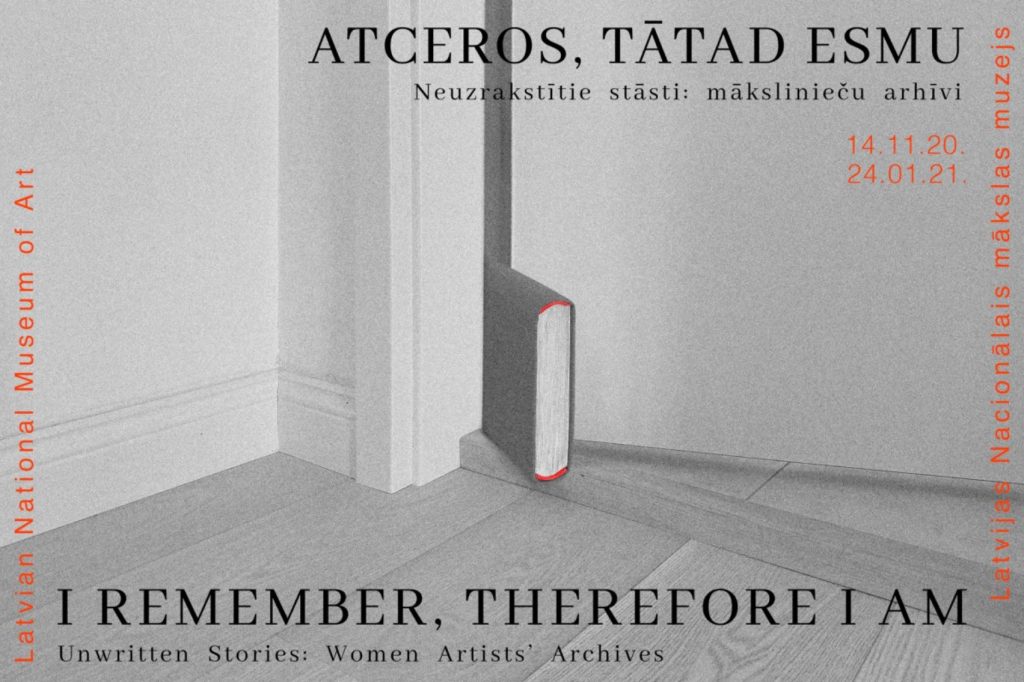
From 14 November 2020 to 24 January 2021, the exhibition “I Remember, Therefore I Am. Unwritten Stories: Women Artists’ Archives” organized by the Latvian Center for Contemporary Art will be on display in the 4th floor exhibition halls of the Latvian National Museum of Art. The exhibition will bring to the fore different possibilities of interpreting art history through the experiences of women artists in the context of art, social and political events during the Soviet period.
An opinion that has been already long-established is that in writing world history, within the framework of the dominant patriarchal and hetero-normative social structures women’s experiences have continuously been “omitted”. The current socio-political events on the global stage, especially as revealed by the pandemic, also point out a necessity to change familiar views on world order by shaping a more open, inclusive and equal society. Despite determined attempts to change prevailing views, there has been a continuous need to produce new knowledge that would emphasis the ignored stories. It also raises the question why do we continuously forget and marginalize the achievements of women?
By re-examining events in Latvia and Eastern Europe in the second half of the 20th century, which are marked by the Soviet period and its cultivated illusion of “gender equality”, the exhibition will offer opportunities for interpreting the recent past, by turning against the established hierarchies in shaping historical narratives. The exhibition will expand different artistic practices, facts, memories, human and aesthetic values, which can comment not only on the position and influence of women artists in the social and cultural scene, but can also reveal new stories of our shared history. The core of this exhibition is the artists Rita Einberga (1921–1979), Laima Eglīte (1945), Maija Eliase (1924–1991), Mudīte Gaiševska (1935), Ruta Kreica (1946), Rasa Kalniņa-Grīnberga (1936) and Olga Neimane-Kateņeva (1908–2001). Each of them represents different artistic strategies which are linked to the alternative culture and attempts of diversifying visual language, as well as to the range of creative interests within the official art scene. Whereas considering questions of feminism and gender in present-day context, original works specifically for the exhibition will be created by the artists Anni Puolakka (Finland) and Marta Trektere, Evita Goze, Rasa Jansone, Liliana Piskorska (Poland).
The exhibition project is a collective research initiative which links ten researchers, with the purpose of understanding the ways how and what we can learn if we unite our knowledge, abilities and skills, and thereby bringing to attention questions of solidarity from the historical and today’s perspective. What shared considerations or circumstances can encourage the process of working together? What are the different approaches to knowledge that we can gain about our past in this way?
Latvian Centre for Contemporary Art, curator and producer for art events of international and national scale, is the largest institution of contemporary art in Latvia. Since 1993, LCCA has researched and curated contemporary art processes both in Latvia and internationally to provoke critical reflection on issues topical for contemporary society. The Centre is widely recognized for the largest annual contemporary art event in Latvia – the festival “Survival Kit”, regular exhibitions of contemporary art at the Latvian National Museum of Art, the year of Hardijs Lediņš, as well as Latvia’s representation at the Kochi-Muziris Biennale, Venice Biennale, São Paulo Art Biennial, “Manifesta”, Rauma Biennale of Contemporary Art, etc. LCCA maintains the only archive of contemporary art in Latvia.
The exhibition is organized and produced by Latvian Centre for Contemporary Art (LCCA)
Curator: Andra Silapētere (LCCA)
Research group: Evita Goze, Rasa Jansone, Toms Ķencis, Ieva Laube, Ieva Melgalve, Justīne Savicka, Paula Stutiņa, Terēza Šulca, Iliāna Veinberga
Curator of the education programme: Māra Žeikare (LCCA), Graphic design by: Evija Pintāne, Exhibition design by: Liene Mackus and Artūrs Arnis
Project Coordinators: Adele Bea Cipste, Margarita Ogoļceva (LCCA) and Ieva Kalnača (LNMA)
Head of Communication: Paula Jansone (LCCA), Gunta Turnele (LCCA)
The project is co-funded by the Creative Europe programme of the European Union, the Ministry of Culture of the Republic of Latvia, the State Culture Capital Foundation, FRAME Contemporary Art Finland.
THE EXHIBITION ORGANIZED BY SCCA-LJUBLJANA ‘3 + 3 = 6. THREE WOMEN ARTISTS, THREE PRACTICES, THREE DECADES’
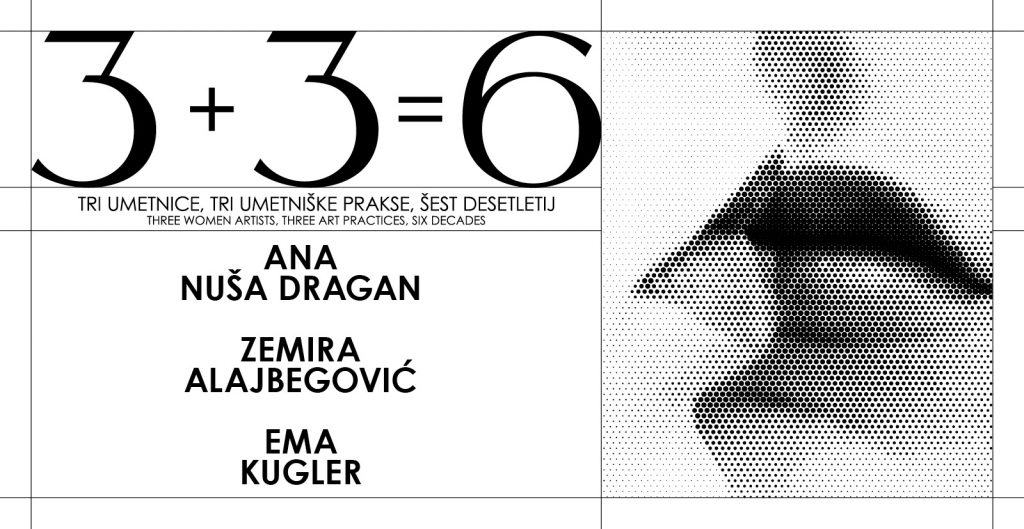
Women artists: Ana Nuša Dragan, Zemira Alajbegović, Ema Kugler Curated by: Barbara Borčić & Peter Cerovšek
Production: SCCA-Ljubljana 2020
Project Room SCCA, Metelkova 6, Ljubljana: due the covid-19 dates will be announced soon
The City Hall Glass Atrium, Mestni trg 1, Ljubljana: due the covid-19 dates will be announced soon
The exhibition will present video works, films, documents and objects by three women artists: Ana Nuša Dragan, Zemira Alajbegović and Ema Kugler who were/are active in the field of action/performance, film and video art in Slovenia. The beginnings of their activities date back to different periods of the 20th century: the 1960s (Dragan), the 1980s (Alajbegović) and the 1990s (Kugler). They have always worked in collaboration with numerous artists and in tune with the challenges of time, either in frame of socialist system or the one of liberal capitalism. The specific conditions of production have thus largely defined their artistic practices, ranging from Conceptual and Alternative to Post-Modern Art.
Ana Nuša Dragan (1943 – 2011) graduated from the Sociology and Psychology departments of the Faculty of Arts in Ljubljana. She specialised in television and video media at the British Film Institute in London in 1972, and received a scholarship from the French government in Paris in 1984. Between 1967 and 1988, she worked in short film and video art together with Srečo Dragan. Since 1988, she had been creating in the domain of video art and TV documentaries on her own. She worked as the Head of the Media Education at the Educational Technology Department in the National Education Institute.
Zemira Alajbegović (1958) graduated from Sociology at the Faculty of Social Sciences in Ljubljana. From 1982 to 1988, she was a member of the FV (112/15), multimedia and theatre group and of FV Disco clubthat worked on the Ljubljana subculture scene and this was where and when she also started to work in video. In the 1980s, she co-founded the video production FV Video and FV Label, the first independent music and video publishing house in Yugoslavia. From 1983 to 1989 was a member of the Borghesia group (multi-media performances, video clips).In collaboration with Neven Korda, she was the author of numerous video films, music videos and dance videos (under the name ZANK). In recent years, she has directed documentaries and TV shows on art and culture. Since 2011, she has been working as a journalist and director in the cultural sector of Radio Television Slovenia.
Ema Kugler (1955) graduated at the Faculty of Economics in Ljubljana. In 1980s, she worked at alternative Radio Student in Ljubljana and collaborated in numerous multimedia projects and alternative fashion shows. Her field of interest covers different media: performance, installation, film, video and theatre costume design. She works as a freelance director, screenwriter, scenographer, costume designer, editor, a multidisciplinary artist with unique artistic expression. She is the author of five full-length films, numerous video and short films, performances, and art installations.
‘MIDTERM’ MEETING OF ‘NOT YET WRITTEN STORIES’ TEAM
Separated but together! Not Yet Written Stories Team and our mid-term-meeting! This time only on-line, not in Warsaw, but still with a good energy and good ideas. Participants of the meeting: Marika Kuźmicz, Paweł Lisiecki and Monika Tramś from Arton Foundation, Barbara Borčić and Peter Cerovšek from Centre for Contemporary Arts SCCA-Ljubljana, Andra Silapētere from LCCA Latvian Centre for Contemporary Art in Riga and Sandra Križić Roban, Lana Lovrenčić and Ena Grabar from Office for Photography, Zagreb.
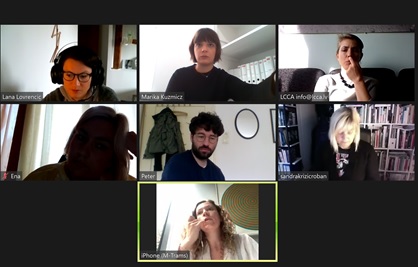
THE NEW FUNCTIONALITIES OF OUR DATABASE
You can check the new functionalities of our database here: http://www.forgottenheritage.eu and explore on-line the archives of women artists from Croatia, Latvia, Poland and Slovenia. Don’t forget to follow our map, presents the results of our research:
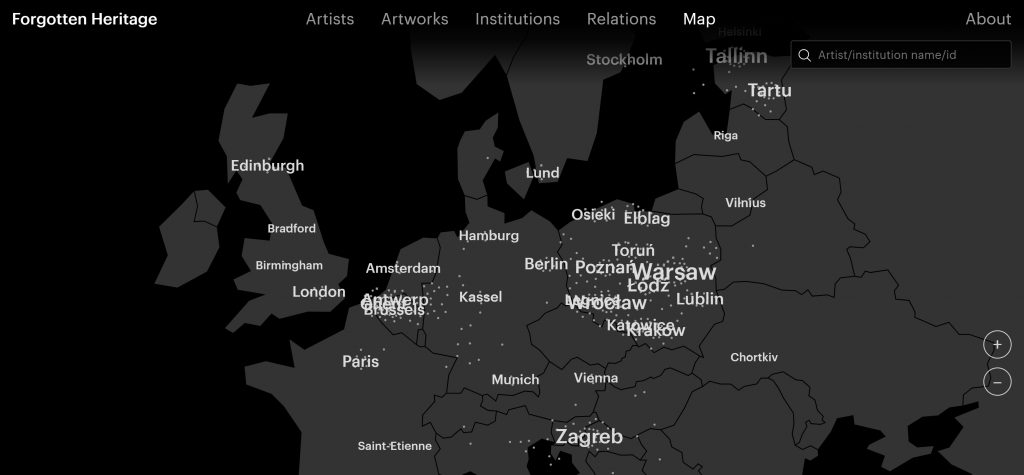
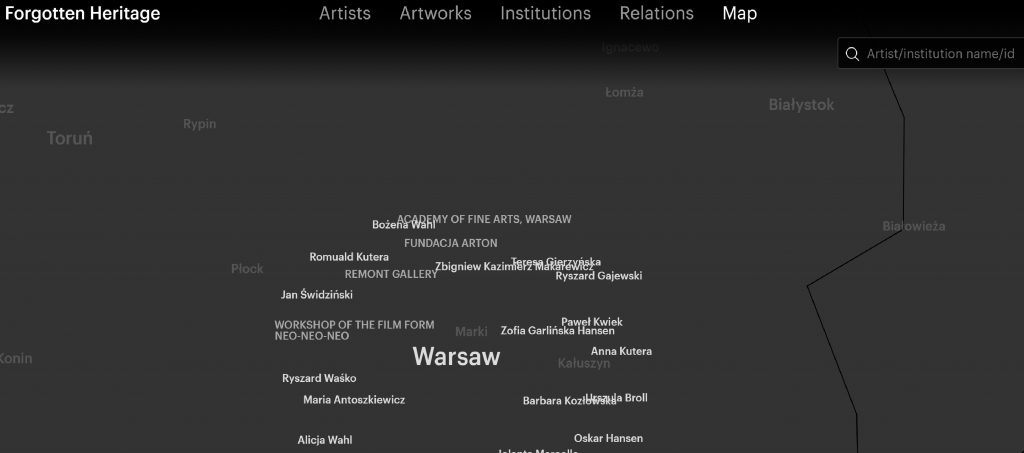
OUR RESEARCH IS IN PROGRESS
Get some more details about our project and participating artists and their works from the article by Karen Chernik for Hyperallergic nad the Radio Kapitał (Warsaw) broadcast with Marika Kuźmicz (available only in Polish).
https://hyperallergic.com/582195/writing-the-untold-stories-of-polish-women-artists/
WORKSHOPS IN THE CENTER FOR CONTEMPORARY ARTS SCCA-LJUBLJANA. VISITING THE STUDIO OF EMA KUGLER
Slovenian artists, Ema Kugler took us through her art projects (performances, multimedia projects and video works) in the authentic environment of their creation. Kugler is an author who cooperate with a large team of collaborators and performers, and over the years, she has made more and more segments of her work herself (stage design, costumes, editing …). We were able to see parts of her scenography, objects, statues and costumes in this large studio in an abandoned hall behind the Railway Museum, where she has been working for ten years and where she has prepared a series of performances. She spoke about her artistic procedures and work process, as well as the conditions for creating and presenting her works. The students were interested in the conceptual framework of her work and the technical production, which is noticeably demanding and time-consuming. Visit at the studio of Ema Kugler was the first part of workshops during the project “Not Yet Written Stories…”
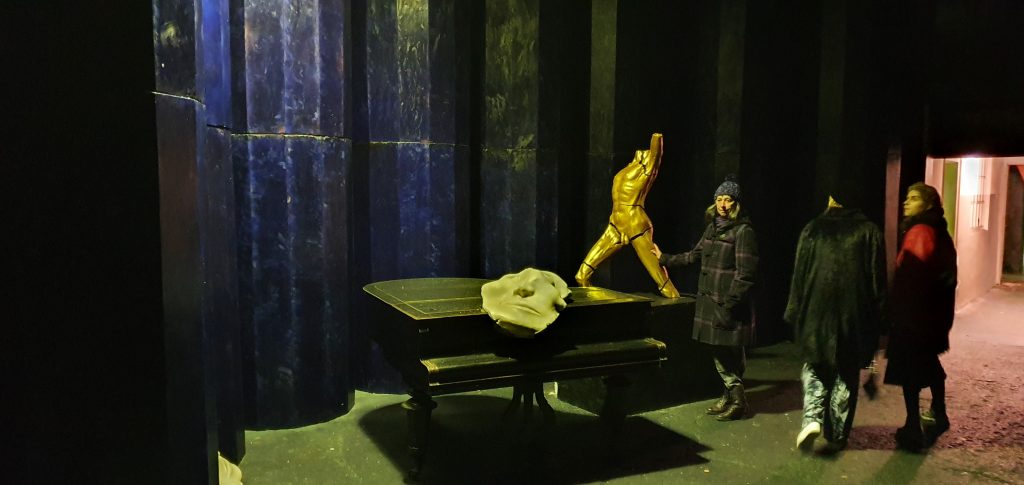
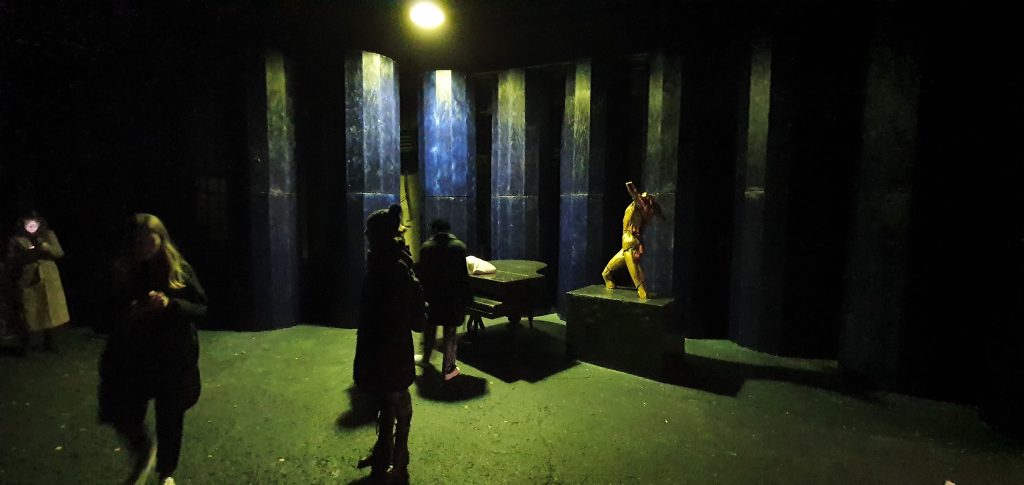
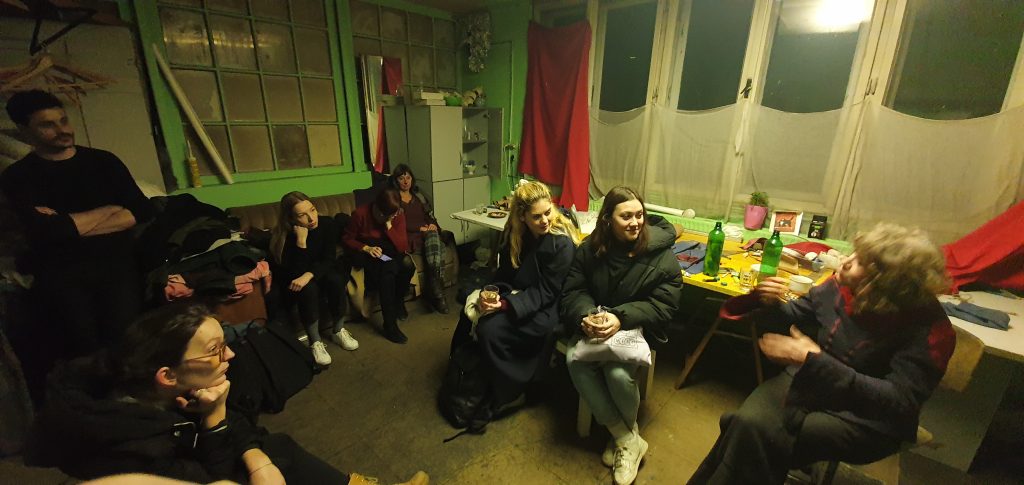
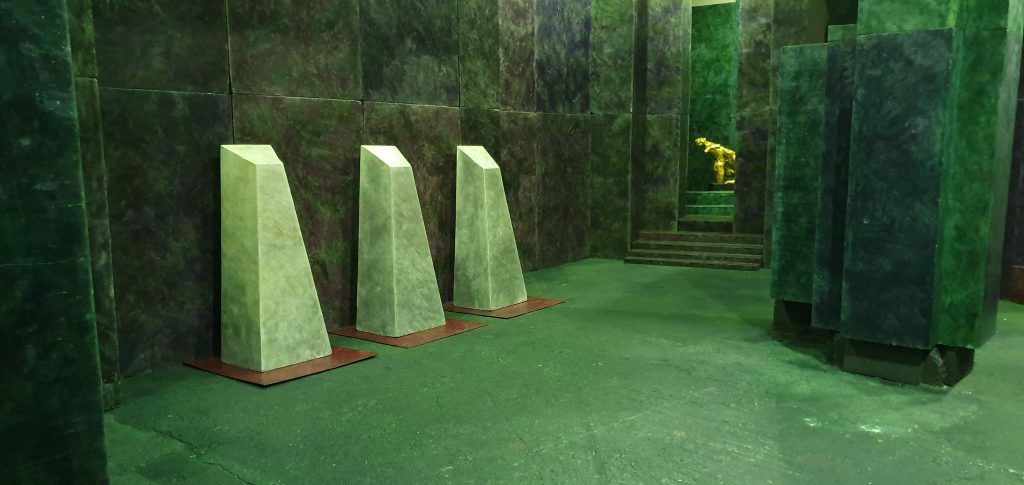
Soft Shooting? INTRODUCING THE HISTORY OF WOMEN’S PHOTOGRAPHY IN CROATIA
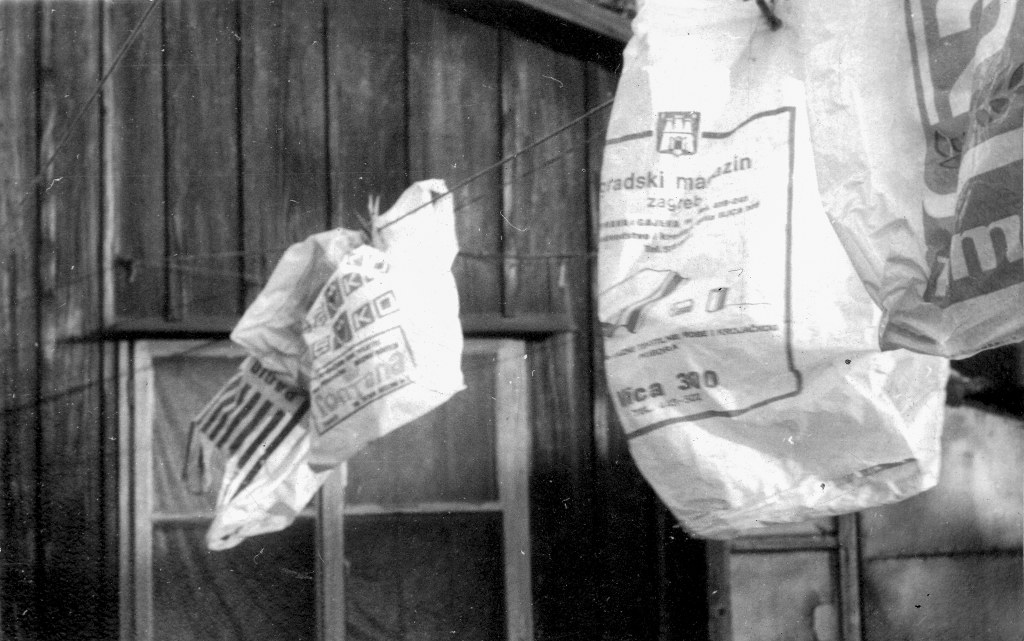
In the history of Croatian photography there are still many topics and themes that need exploring, not to mention that the development of the medium itself is still waiting to be properly synthesized. When talking about the photography of post-war Croatia one has to acknowledge that it is severely marked by the limited opportunities for education, the underdeveloped exhibition politics and the almost complete lack of a critics scene. One of the major roles in the development of Croatia’s photography was played by amateur club photography – the so called photo clubs, particularly during the late 40s and the first half of the 50s. One of their most important functions was precisely the education of amateur photographers. It should be noted that the Photo Club Zagreb was one of the strongest in the whole of ex-Yugoslavia and played a vital part in the general technical education of the population, thus setting the foundations for the artistic work of its members. After a brief period of ideological dominance, a new sort of liberation occurred at the beginning of the 50s, allowing amateur club photography to take over. This would prove crucial for the development of women’s photography. While women photographers had worked and participated in club activities throughout the post-war period, their first collective appearance on the center stage did not take place until 1973, when following the initiative of club president Đuro Griesbach the Women’s Section of the Photo Club was founded. Their first exhibition was organised that same year in the Gallery of Artistic Photography (Galerija umjetničke fotografije – GUF), in Zagreb, with more events to follow annually in the Zagreb City Museum on the 8th of March, the traditionally celebrated Women’s Day.
The exhibition ‘Soft’ shoooting? is not, however, meant to be a retrospective of the Women’s Section’s achievements on the national map of photography. Its primary intention is to encourage a discussion about the ways and journeys of women photographers. The first fact that needs to be acknowledged is that when it comes to the territory of ex-Yugoslavia women photographers entered the scene late and not without obstacles. The printed media were key to introducing photography into the various levels of society. While specialised photography magazines were in no short supply, the first of which having been published in Yugoslavia in 1911, most of them were devoted to technical questions – offering advice to amateur photographers and advertising new products. This state of things would continue for quite some time and the idea of women’s photography would not even begin to be considered until after World War II and even then rather sporadically and unsystematically. A handful of women photographers were active within private photography studios. Acting within the confines of a studio was considered appropriate for women, mostly due to the opinion that this type of isolation allowed for a more intense relationship with the subjects and in which women were believed to be more successful than men.
Photography was not only embraced by artists working exclusively in that field, but also by artists who were introduced to it through their education at various art schools and academies both at home and abroad. Nonetheless, it was the photo clubs who truly generated the changes that marked the period between the 1950s and 80s.
With the selection of Slavka Pavić’s, Erika Šmider’s, Danijela Lušin’s, Ivančica Privora-Kurtela’s and Jadranka Fatur’s works we draw attention to the topics they covered, get to know the means through which they acquired their knowledge and get to know the events which at least partially influenced and left their mark on these artist’s works. We will ask ourselves: is there such a thing as a critical depiction of society? What did the others say about women holding cameras? And is there even something that could be described as a “woman’s gaze”? Is the way they took their images truly “soft”, or is there no such thing as gender behind the lens? – these are the questions that the exhibition will address.
15th of June – 4th of September 2020
Curator: Sandra Križić Roban
Assistant: Sara Simić
WORKSHOPS BY LCCA – LATVIAN CENTRE FOR CONTEMPORARY ART
We would love to share with you some news about creative workshops organized by Latvian Center for Contemporary Art LCCA in Riga.Workshops are important part of our project, where the participants can get info about history of women artists, their archives and tips how to redefine the canon of art. You can check the list of workshops below:
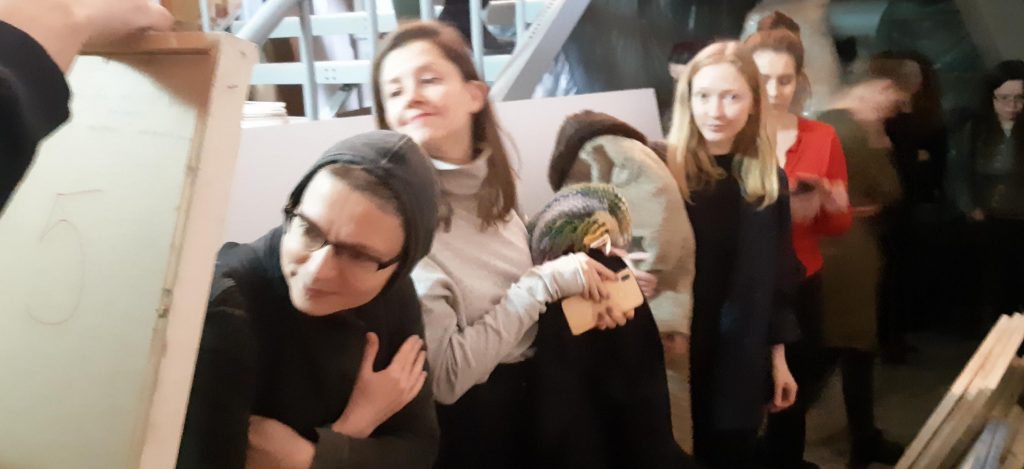
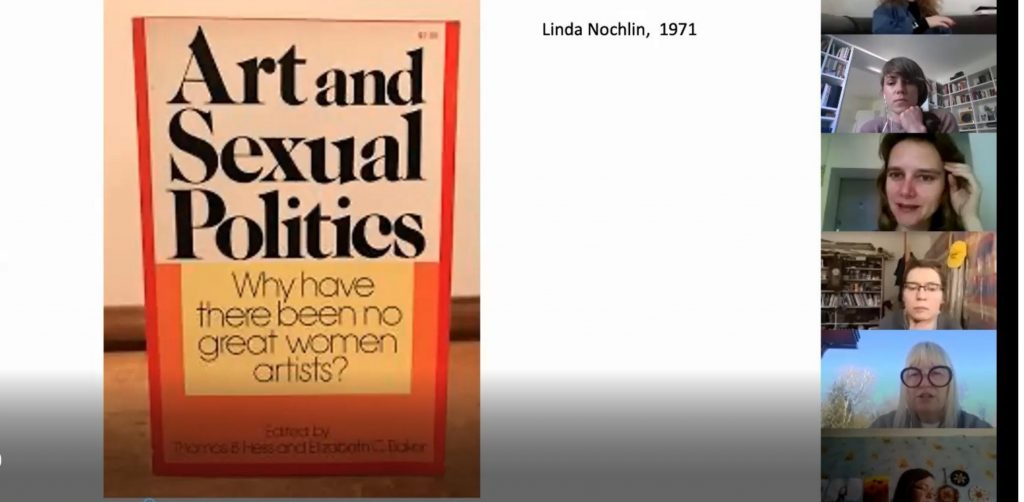
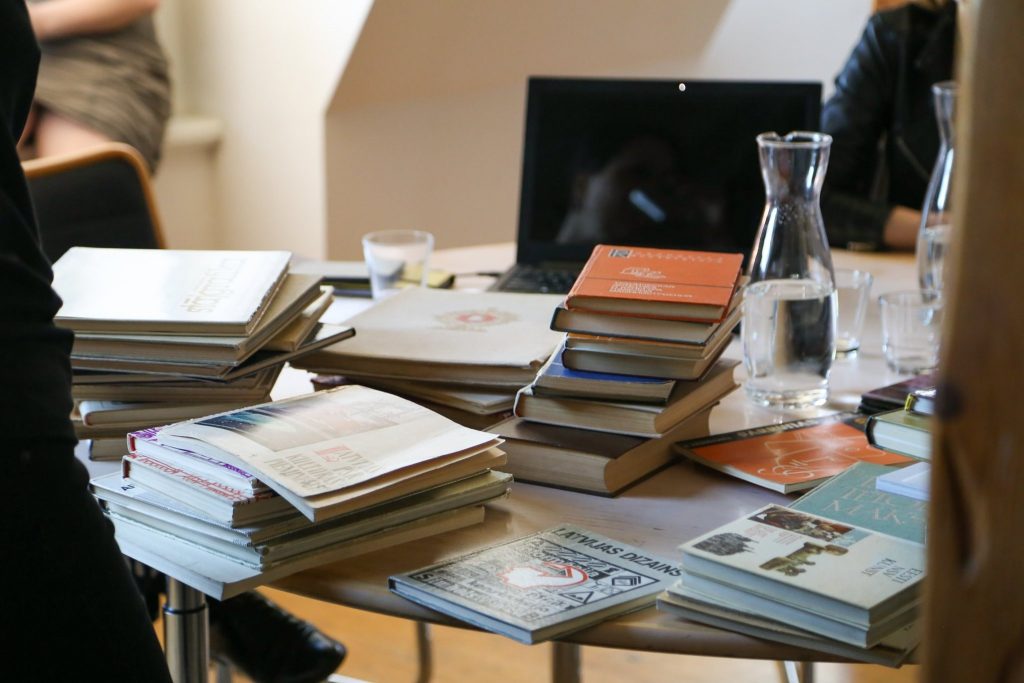
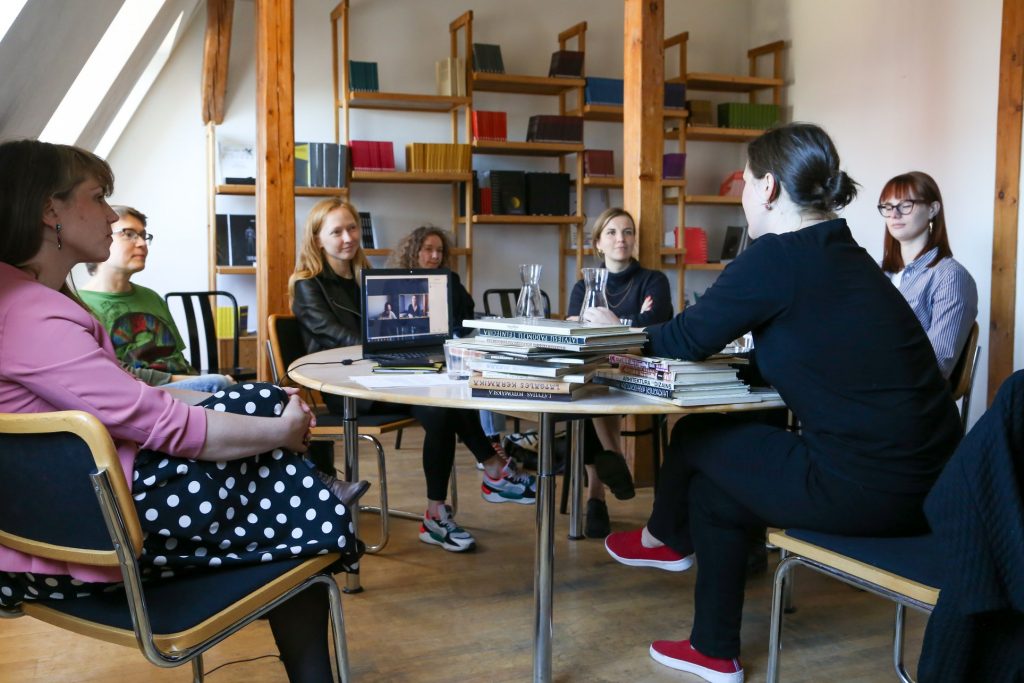
Andra Silapētere: Introduction seminar and visit of the Latvian Art Academy archives and artwork collection.
Eva Eglāja Kristsone: Research on Women’s History: A Biographical and Autobiographical Narrative. Theoretical aspects & practical methods and sources. Lecture and workshop.
Jānis Ozoliņš: Various aspects of Crip theory in Robert McRuer writing. Reading workshop.
Iliāna Veinberga: Soviet period literature and interpretations of this material. Lecture and workshop.
Daina Auziņa: Latvian National Museum of Art’s collection making aspects. Visit to the museum.
Jana Kukaine: About Images and Politics. Lecture and workshop.
OUR RESEARCH HAS BEEN STARTED
Despite of difficulties our research is in progress! Works by Iwona Lemke-Konart are already available on-line: http://www.forgottenheritage.eu Meet artists of our project: Iwona Lemke-Konart is multidisciplinary artist, performer, filmmaker and conceptual artist active in the 1970s and 1980s. At that time she was as also an organizer of numerous events (exhibitions at Galeria S, which she operated in Toruń, Poland, lectures and symposia).
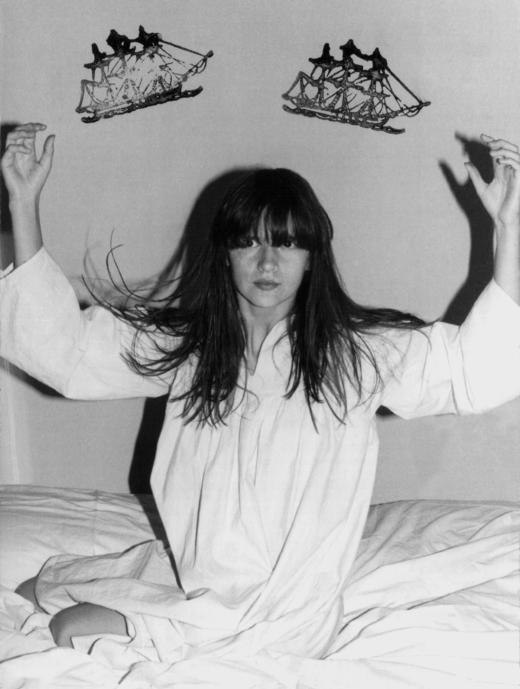
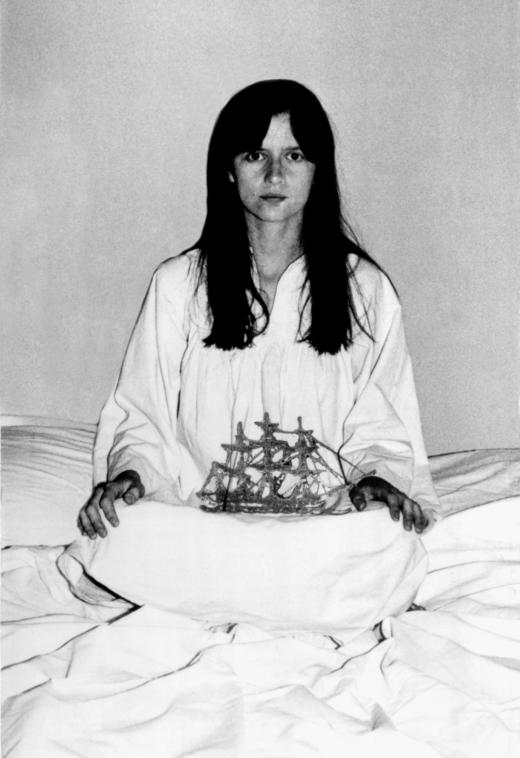
STAY TUNED, VISIT OUR SOCIAL MEDIA
Visit our social media and be updated our project: https://www.facebook.com/ForgottenHeritage.eu/ https://www.instagram.com/notyetwrittenstories/?hl=pl and you can also subscribe our newsletter www.fundacjaarton.pl
KICK-OFF MEETING IN WARSAW
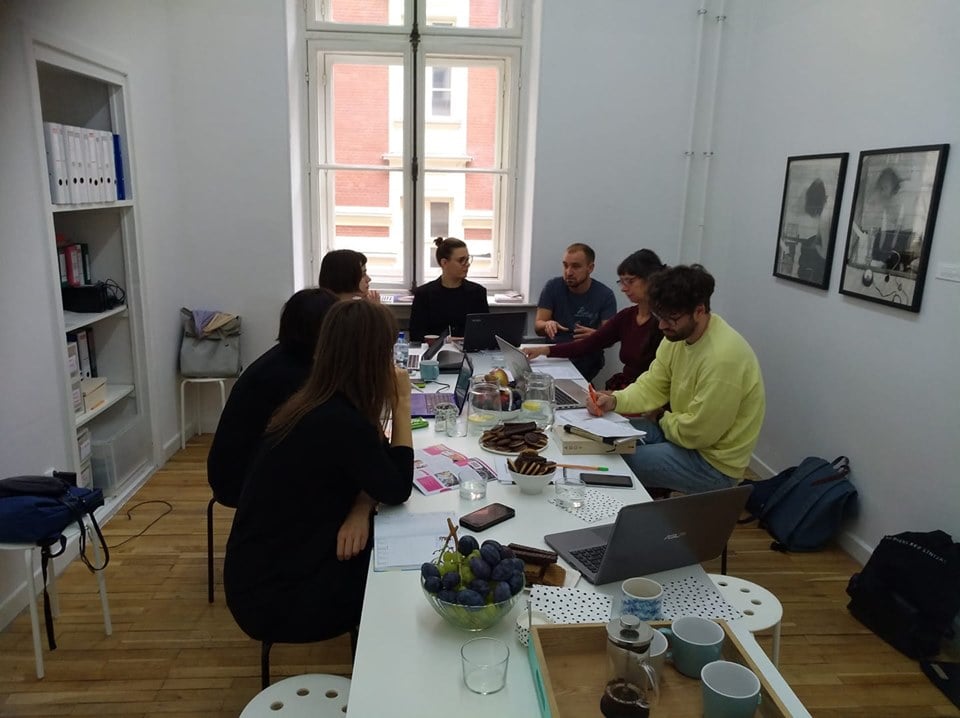
After the kick-off meeting in Brussels, we met our partners in Warsaw for the first time during this project. At the meeting, we discussed substantive issues, such as the fields of our research, proposed topics as “open call for papers” for the conference in 2021, as well as the issues of project management strategy and its individual stages, and the promotion strategy. The meeting lasted two days, it was attended by representatives of all project partners: Lana Lovrenčić and Jelena Pašić from Ured zaFotografiju from Zagreb, Andra Silapētere and Laura Brokāne from Latvian Centerfor Contemporary Art, Barbara Borčić and Peter Cerovšek from Zavod for sodobnoumetnost – Ljubljana / SCCA (Center for Contemporary Arts – Ljubljana) and Marika Kuźmicz, Paweł Lisiecki and Ewa Kociszewska from the Arton Foundation (Arton Foundation).
KICK-OFF MEETING IN BRUSSELS
On October 21, Marika Kuźmicz, the coordinator of the project “Not Yet Written Stories: Women Artists Archives Online” and Paweł Lisiecki, the financial coordinator of the project, participated in the inaugural meeting of the Creative Europe program. The coordinators participated in the meetings and workshops proposed by the organizers. For us especially important were meetings dedicated to the issue of projects’ finance management. In addition to the scheduled lectures and workshops, we also held networking meetings that were very valuable to us, with representatives of other organizations participating in the kick-off meeting, including people from Germany, Finland and Hungary. Such meetings are very important to us, taking into account the long-term planning strategy of our organisation.
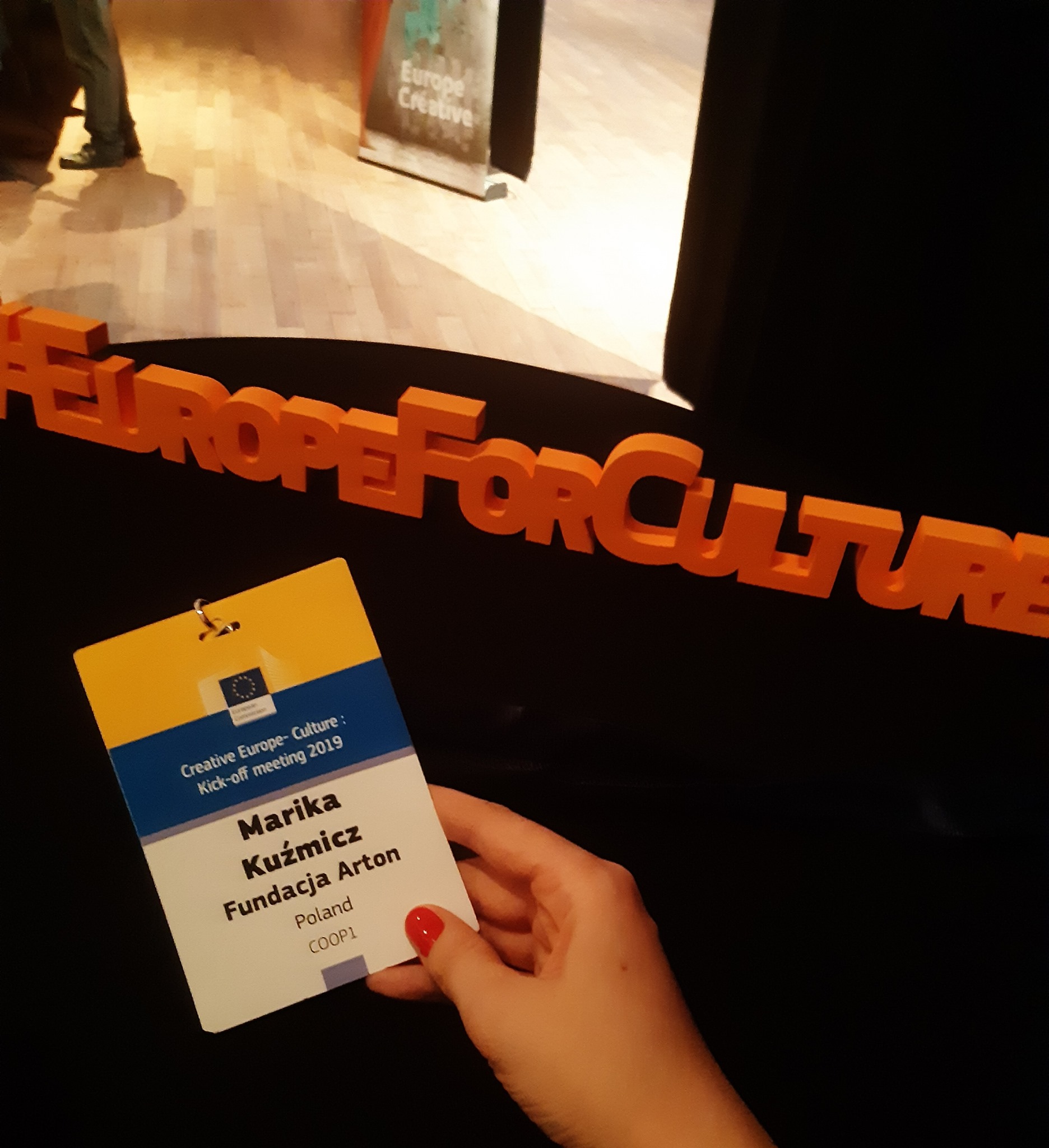
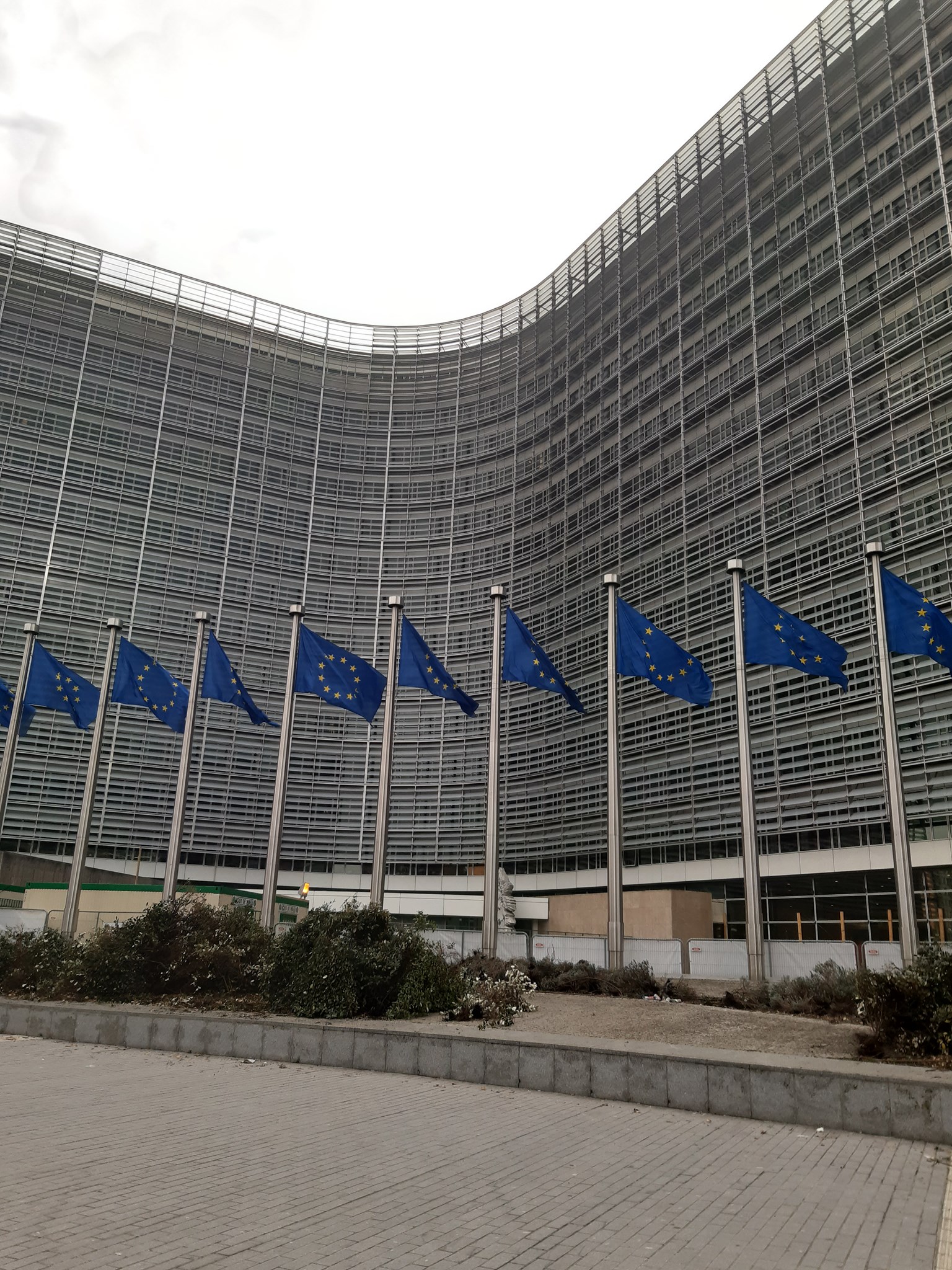
MEET THE TEAM of NOT YET WRITTEN STORIES
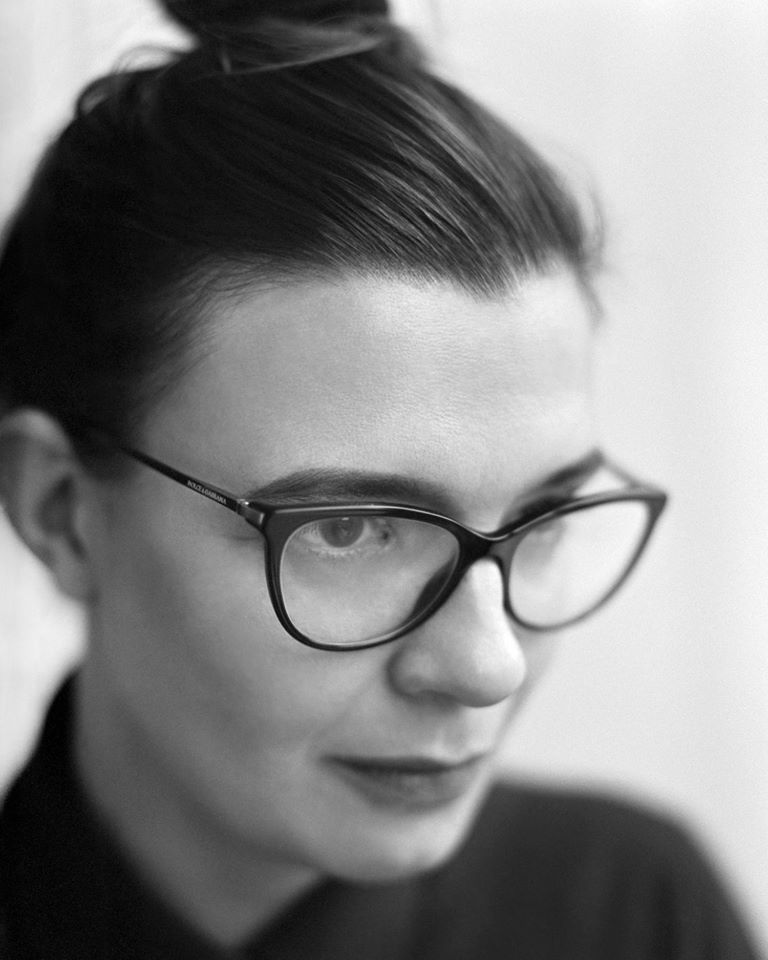
Marika Kuźmicz (Ph.D.) – curator, researcher and publicist. She is a lecturer at the Academy of Fine Arts in Warsaw and Warsaw University. For many years she conducts research on Polish art of the 1970s as a head of the Arton Foundation. The Foundation is a non-profit organization created in 2010 and its main activity is the elaboration of the archives of artists. Marika Kuźmicz is the author and editor of many books, such as “The Workshop of The Film Form” (2016, co-edited with Łukasz Ronduda) or “History of Performance in Poland” (2019). She has curated many exhibitions in Poland and abroad, recently: “Her Own Way – Female Artists and the Moving Image in Art in Poland”,Tokyo Photographic Art Museum. She is as well the curator of the film festival “Arton Review” which 2017 edition took place in Whitechapel Gallery in London. She is the originator and main coordinator of an international art project “Forgotten Heritage – European Avant-Garde Art Online” (www.forgottenheritage.eu).Marika Kuźmicz (Ph.D.) – curator, researcher and publicist. She is a lecturer at the Academy of Fine Arts in Warsaw and Warsaw University. For many years she conducts research on Polish art of the 1970s as a head of the Arton Foundation. The Foundation is a non-profit organization created in 2010 and its main activity is the elaboration of the archives of artists. Marika Kuźmicz is the author and editor of many books, such as “The Workshop of The Film Form” (2016, co-edited with Łukasz Ronduda) or “History of Performance in Poland” (2019). She has curated many exhibitions in Poland and abroad, recently: “Her Own Way – Female Artists and the Moving Image in Art in Poland”,Tokyo Photographic Art Museum. She is as well the curator of the film festival “Arton Review” which 2017 edition took place in Whitechapel Gallery in London. She is the originator and main coordinator of an international art project “Forgotten Heritage – European Avant-Garde Art Online” (www.forgottenheritage.eu).
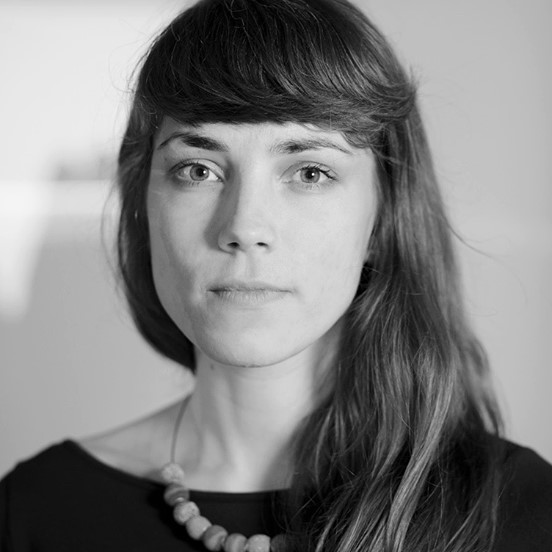
Andra Silapētere is a curator and researcher at the Latvian Centre for Contemporary Art- LCCAt (LCCA). She earned her BA and MA at the Art Academy of Latvia and now is preparing her PhD thesis on Latvian exile art in the U.S. (1948-1991). Silapētere’s field of research and interest include exile and migration topics in art as well as aspects of identity and belonging. Since 2017 she has been programming LCCA’ s international research project “Portable Landscapes” and for the project has has co-curated the exhibitions at the Latvian National Museum of Art, District Berlin and James Gallery, CUNY. Silapētere has also been working with LCCA’s Summer School (2014 -2016) programs and since 2012 she has been editor of the LCCA’s publications series of important works in the field of aesthetics, art and culture theory translated and published in Latvian. She has co-curated as well: “Unexpected Encounters” (Latvian National Museum Exhibition Hall Arsenals, 2019), “Twofold. Kaspars Groševs and Jānis Borgs” (Latvian National Museum of Art, 2017), “Lost in the Archive” (Riga Art Space, 2016).
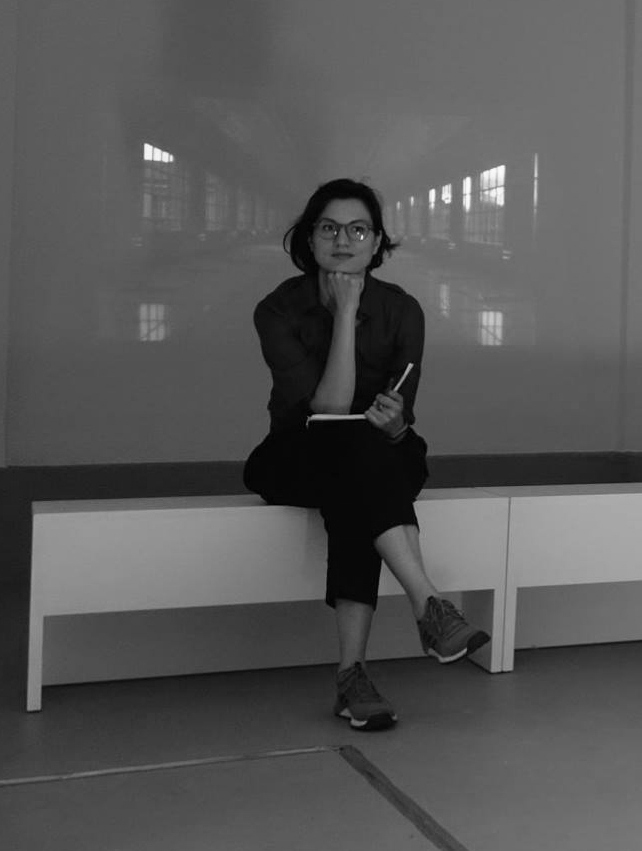
Lana Lovrenčić is Croatian art historian and curator based in Zagreb. Her main fields of interest are photography, cultural heritage and planning practices after II WW. She participated in a number of international projects, including “Unfinished Modernizations”, “Heroes We Love” and “Forgotten Heritage – European Avant-Garde Art Online”. Currently Lana Lovrenčić is part of the NGO Office for Photography where she is dedicated in researching history and theory of photography, as well in organising activities that promote contemporary photographic practices. She is one of the initiators of the international collaborative platform “Inappropriate Monuments” and has curated several exhibitions, including “Tošo Dabac. Within the Frame: Photographing Cultural Heritage” (2017), “Expanded Photography. Segment III” (2018), “Petar Dabac: Portraits 1959-1985” and “Sandro Đukić: An Archive as a Memory Construct” (2019).
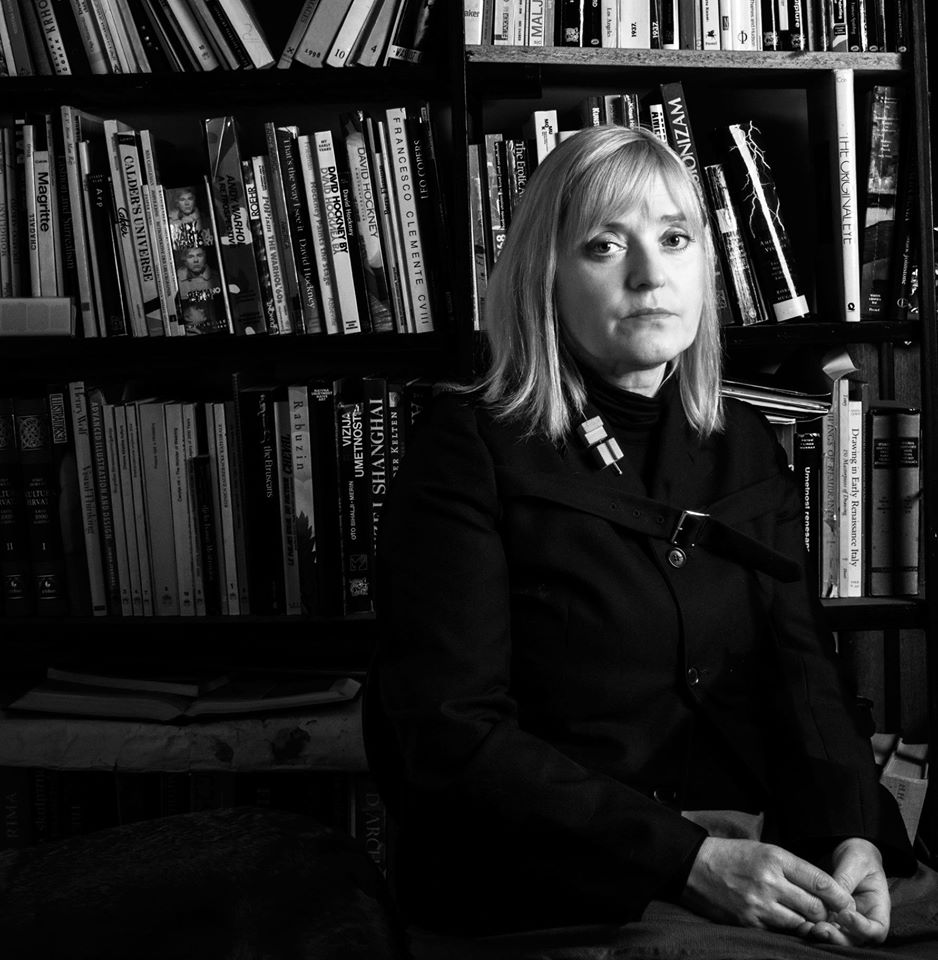
Sandra Križić Roban (Ph. D.) is a Croatian art critic, curator, lecturer and writer, working at the Institute of Art History in Zagreb where she obtained her PhD in art history. Her main research topics include theory of photography, the post-war architecture and contemporary war memorials in Croatia. As a head of the Office for Photography (UzF) established in 2013, a non-profit association dedicated to contemporary photography, she is responsible for the program of Spot Gallery. Apart from attending numerous international conferences, she published many books and art essays. She is the author of the only two comprehensive studies on contemporary photography and contemporary painting in Croatia: “At Second Glance. The Positions of Contemporary Croatian Photography” (2010) and “Croatian Painting from 1945 until Today. Responsibility of Image at the Time of Impatient Look” (2013). As a curator she hosted a number of exhibitions, both in Croatia and abroad, among them recently: “Branko Balić” (with Irena Šimić, Zagreb, 2019), “Jochen Lempert” (with Maren Lübbke-Tidow, Zagreb, Vienna, 2018), “The Most Beautiful Place in the World – Contemporary Slovenian Photography” (Zagreb, 2016, Osijek, 2017).
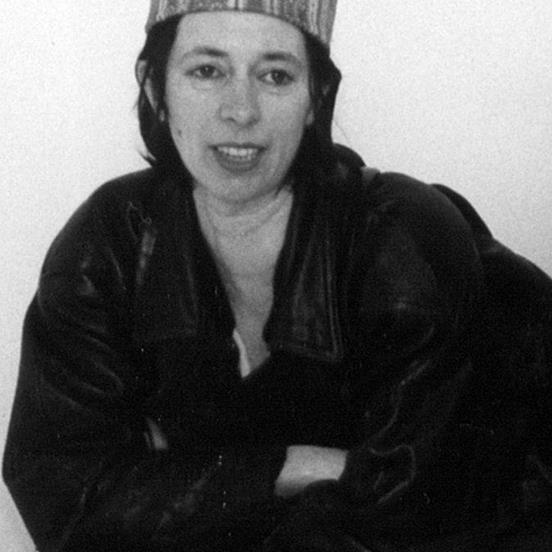
Barbara Borčić is a Slovenian art historian, curator and writer who is active in the field of contemporary arts with a focus on performance and video art. She is as well a Video Program Advisor at the SCCA-Ljubljana, Center for Contemporary Arts. She has curated a number of exhibitions, e.g. “Multimedia Practices and Venues of Production” (Museum of Contemporary Art, Ljubljana, 2017), “Projected Visions. From art in the urban context to fiction and dystopia” (Apollonia, Strasbourg, 2018). She is the author of “Videodokument: Video Art in Slovenia” 1969-1998, the first systematic documentation and research of video art in Slovenia, important in framing terminology and setting theoretic basis for further research. She has curated numerous programs of video art from Slovenia and presented them worldwide, from Moscow, Cairo, Manila, and Berlin to London, Los Angeles, and New York. She has regularly lectured and published texts, e.g. “Video Art from Conceptualism to Postmodernism, (MIT Press, 2003); The Škuc Gallery, “Alternative Culture, and Neue Slowenische Kunst in the 1980s”, (MIT Press, 2015).
NOT YET WRITTEN STORIES: WOMEN ARTISTS ARCHIVES – NEW PROJECT IS COMING
We have a pleasure to inform that Arton Foundation and our Partners: Centre for Contemporary Arts in Riga – LCCA https://lcca.lv/en/ from Latvia, Center for Contemporary Arts SCCA – Lubljana http://www.scca-ljubljana.si/en/home/ from Slovenia and Office for Photograhy https://croatian-photography.com/en/about-us/ from Croatia will start the new project support by the Creative Europe Program. The project will be develop until 2022 and it is dedicated to women artists from Poland, Croatia, Slovenia and Latvia and their archives. We are planning a long term research, digitization of artists’ works and documents, enlargement of our database www.forgottenheritage.eu , publication of scanned material, workshops in partner countries, focus on issues like: how to redefine the canon of European art and how to complete it, how to develop women artists estates, how to curate the exhibition, basing on artists’ archives. Next part of the project will be 4 exhibitions, based on the research, in 4 cities: Warsaw, Zagreb, Riga and Ljubljana. In the spring 2021 we are planning an international conference in Warsaw and a publication – a summary of the whole project.
Logo of our project is designed by Katarzyna Listwan from Paproć Studio.
